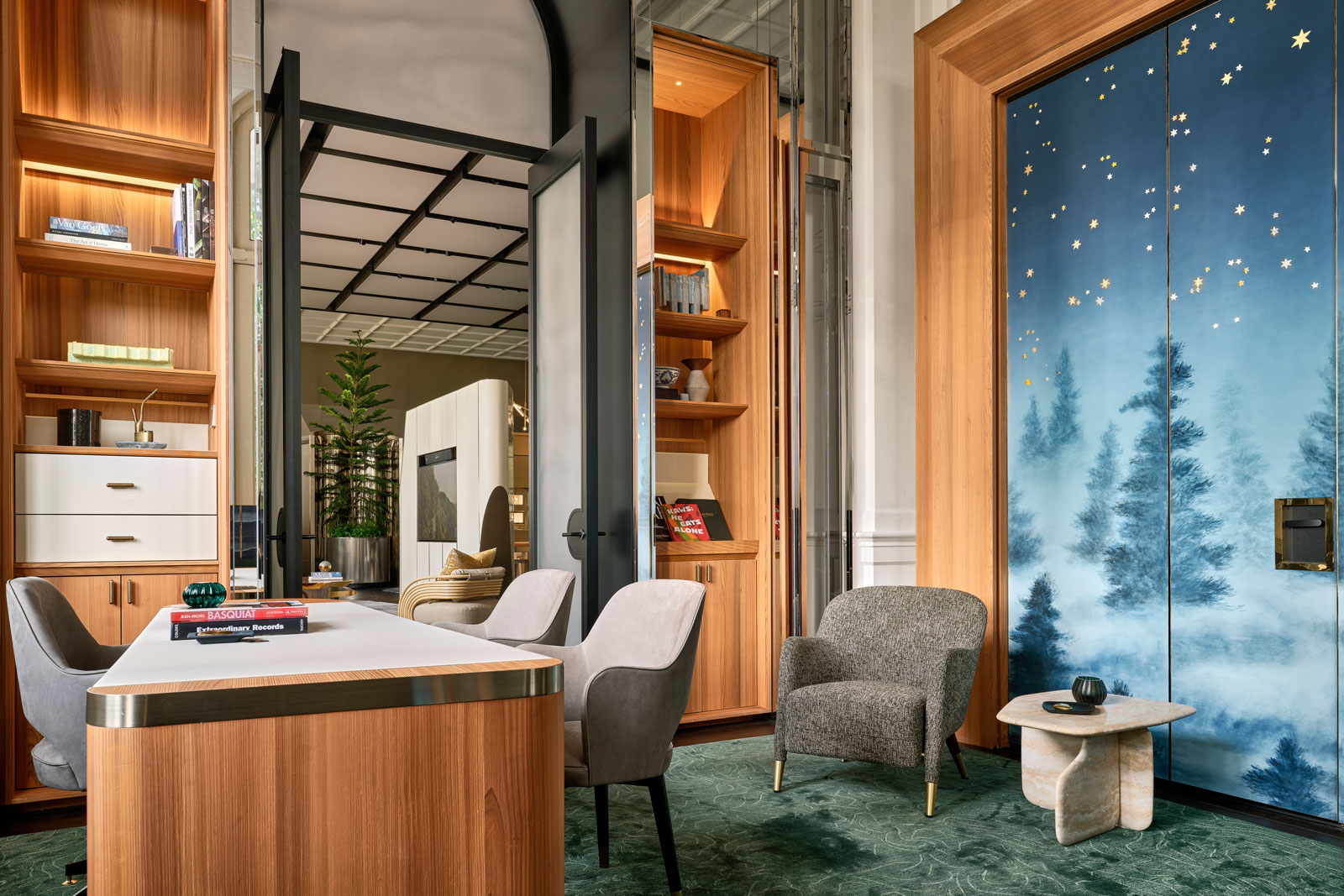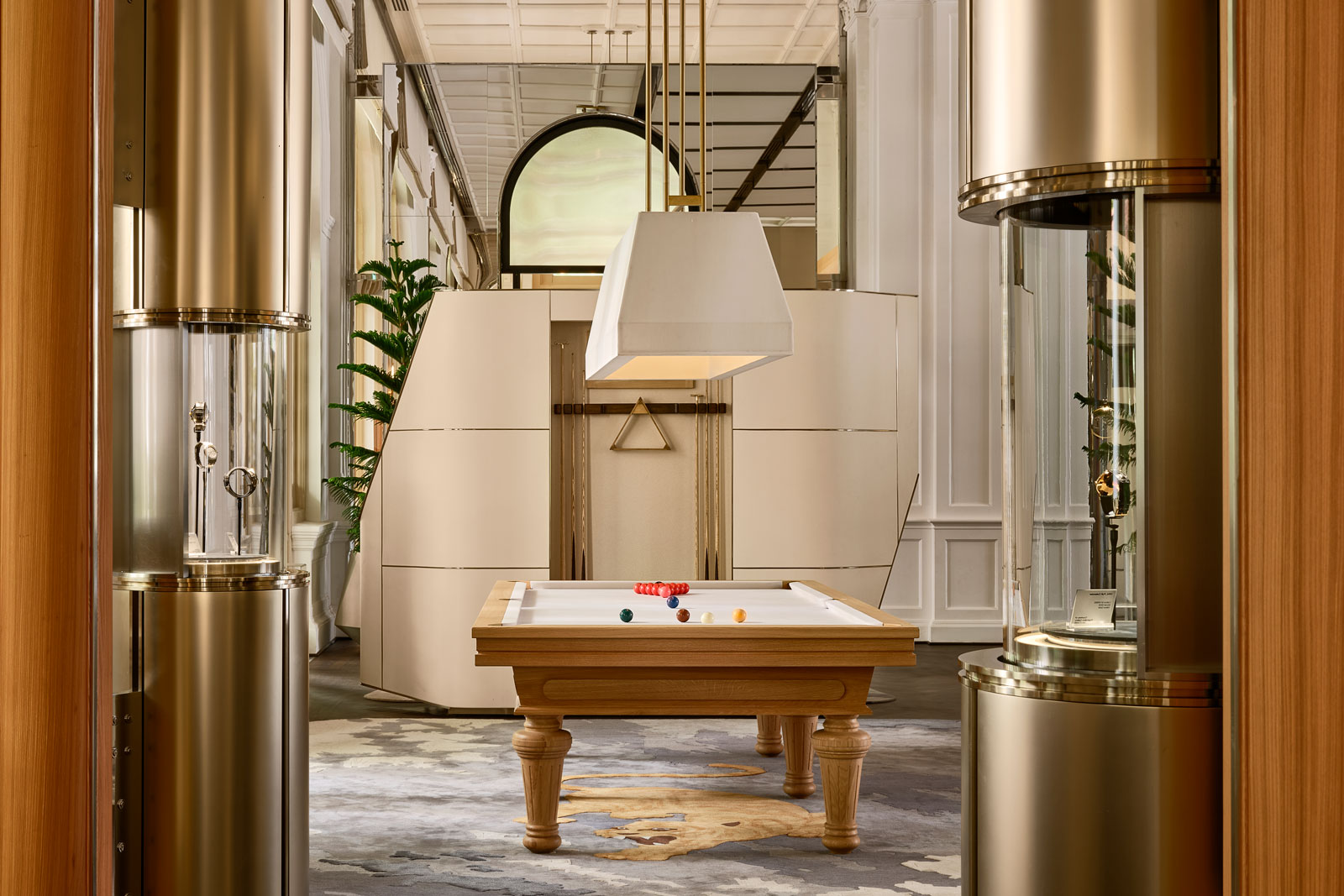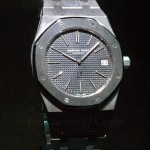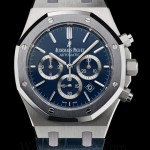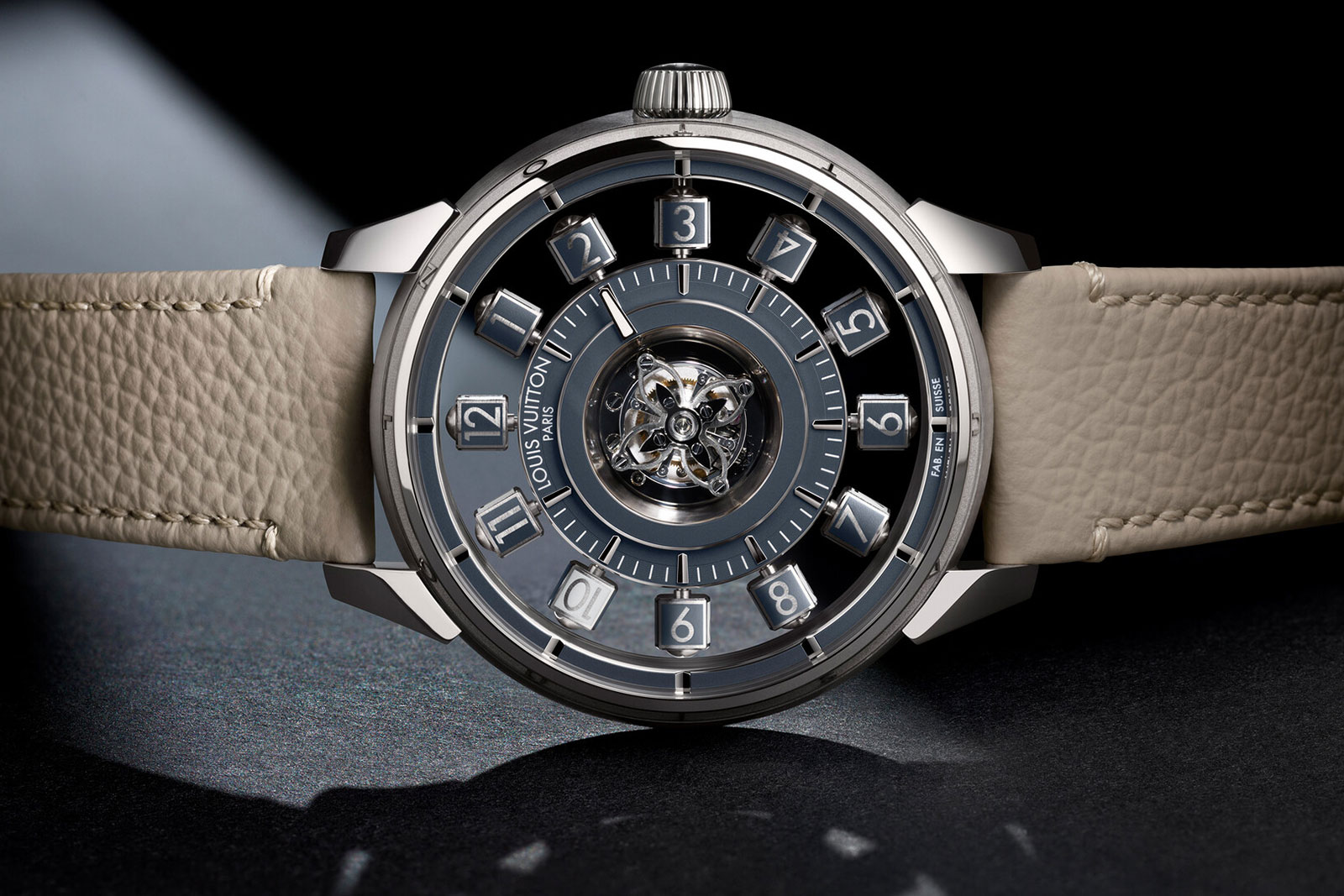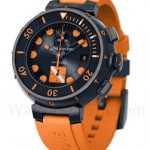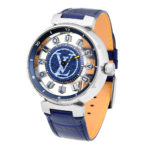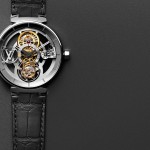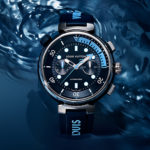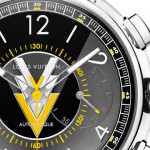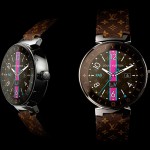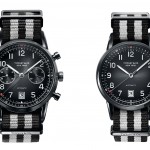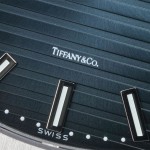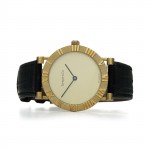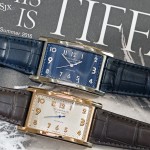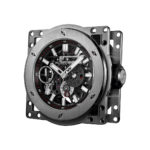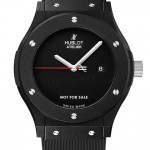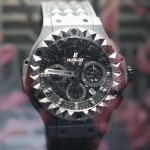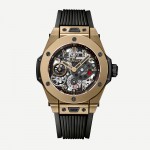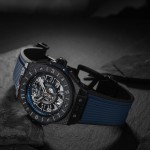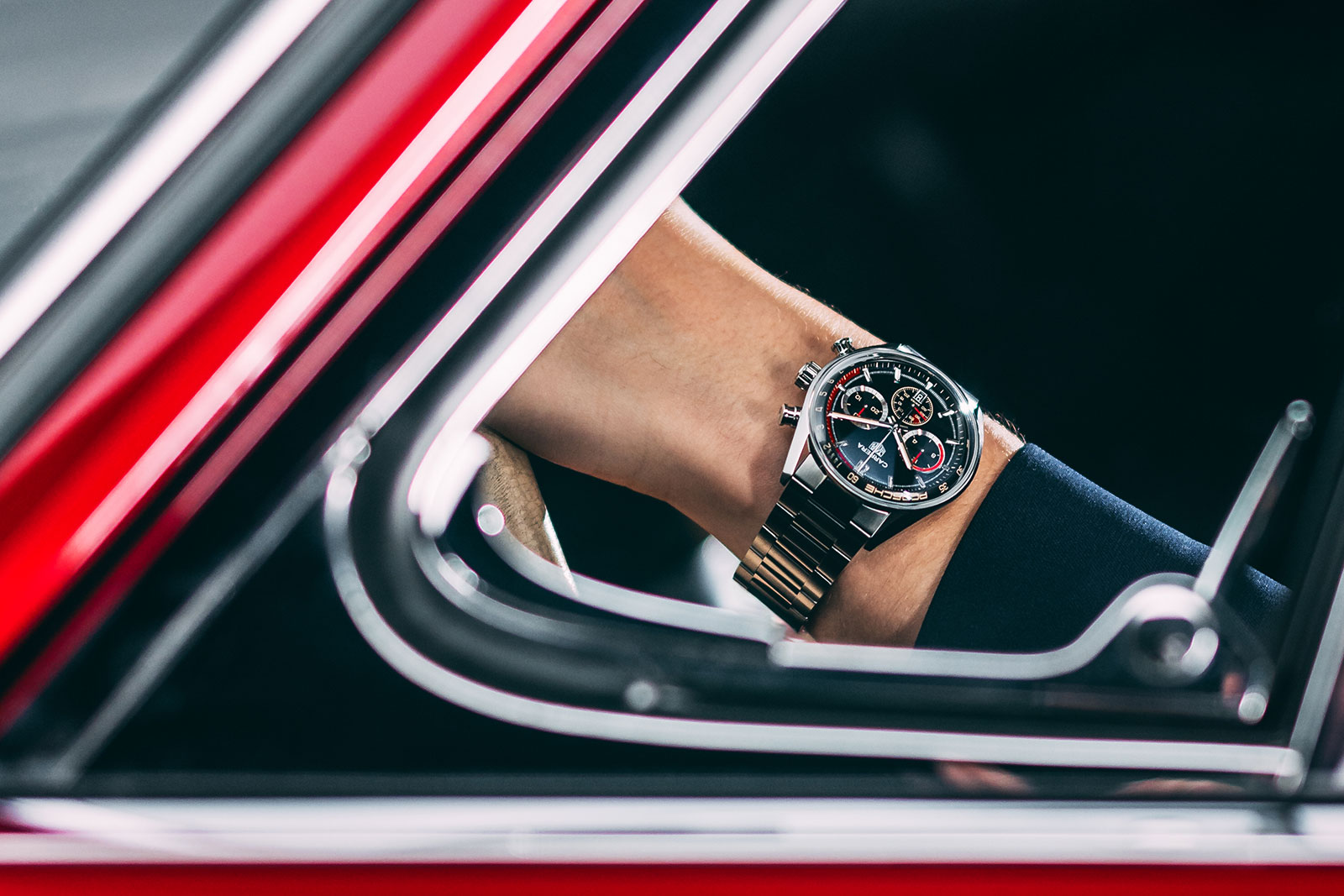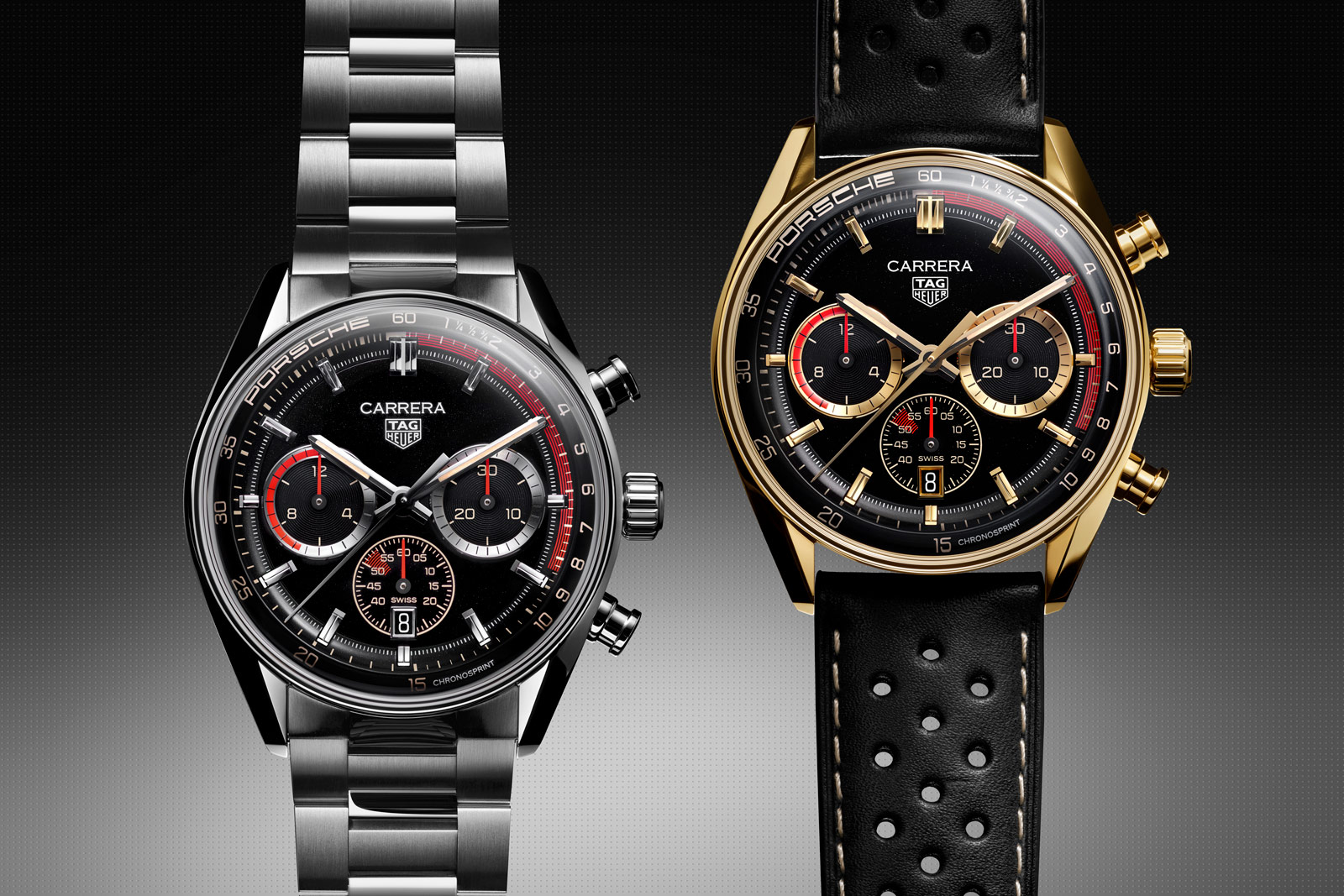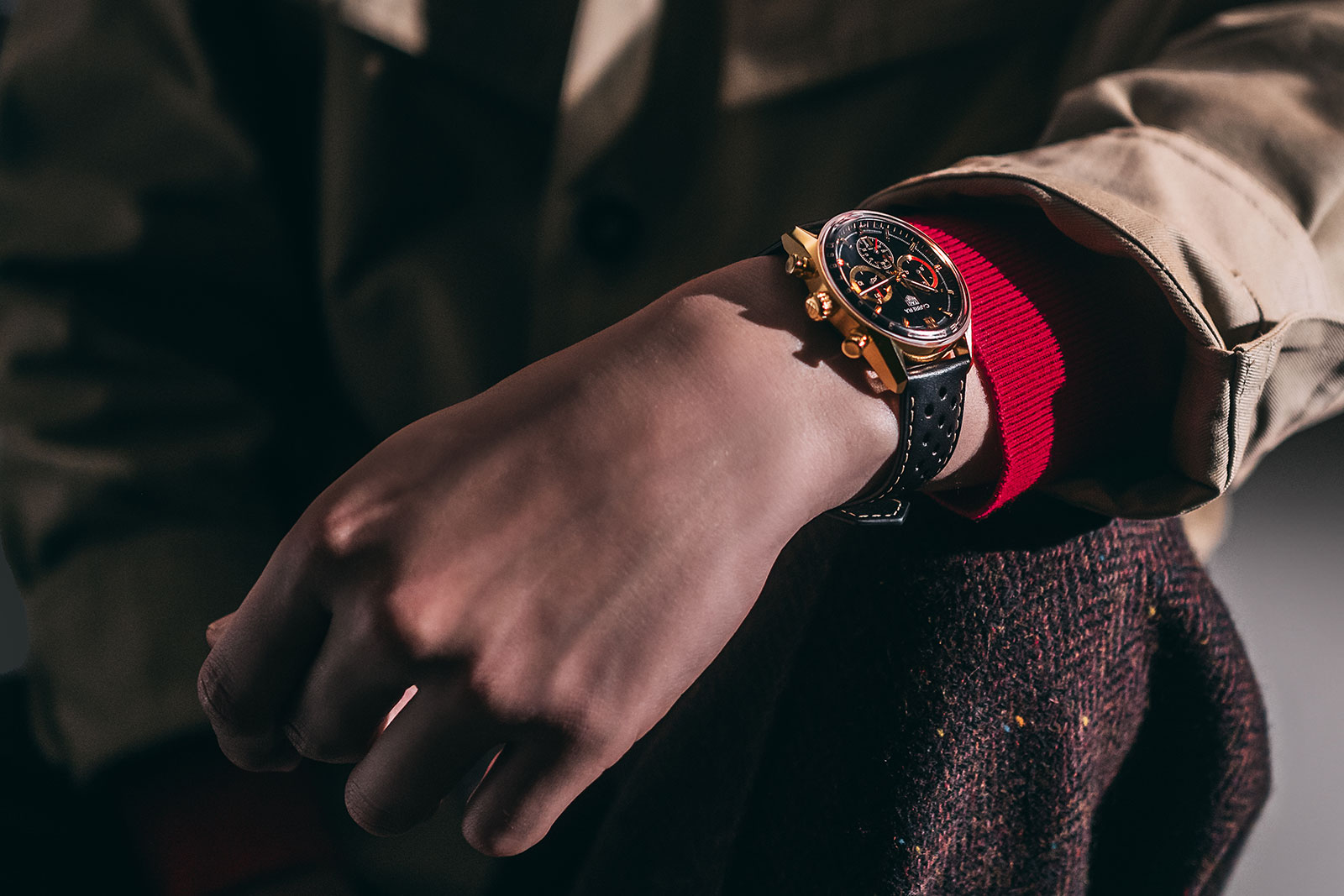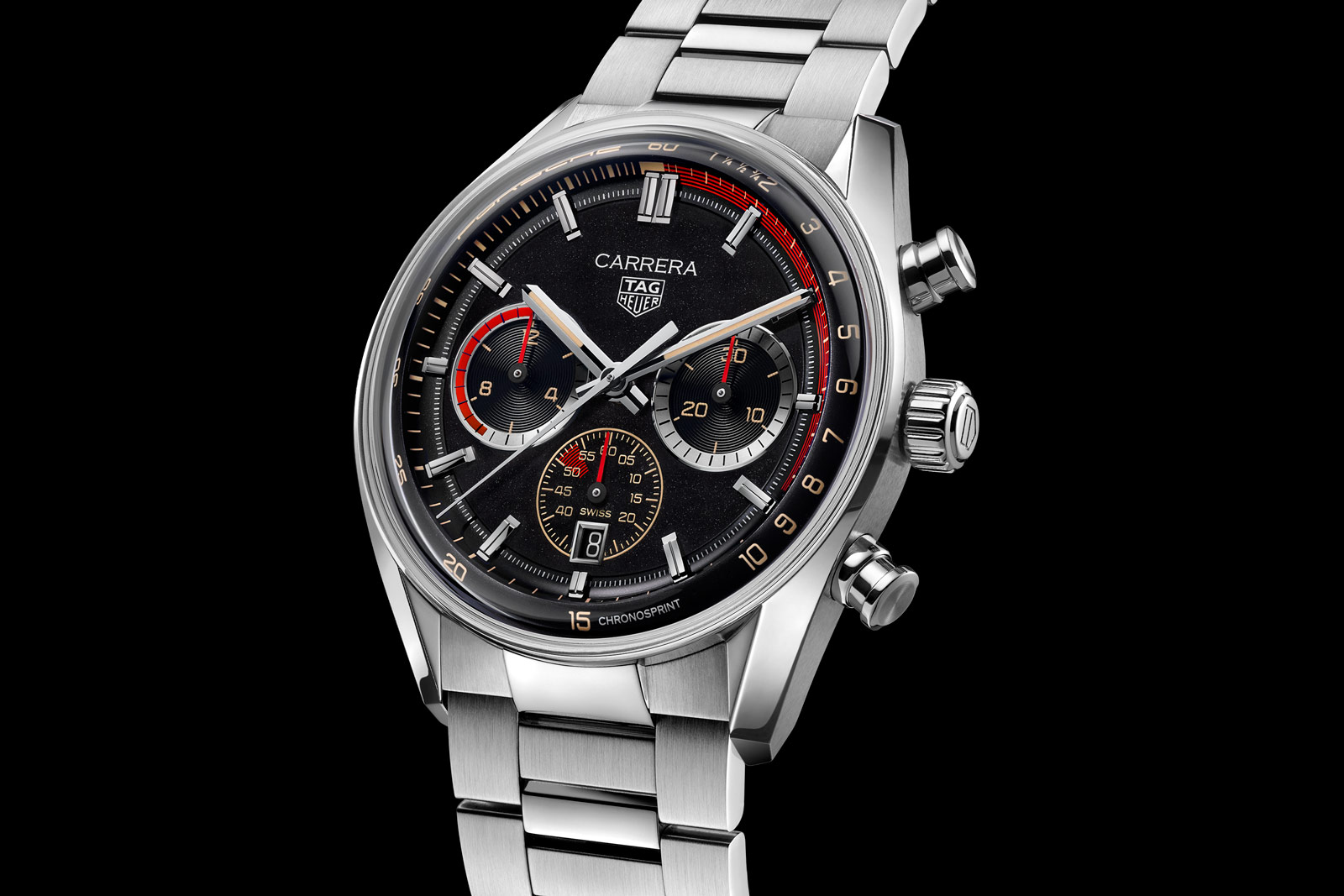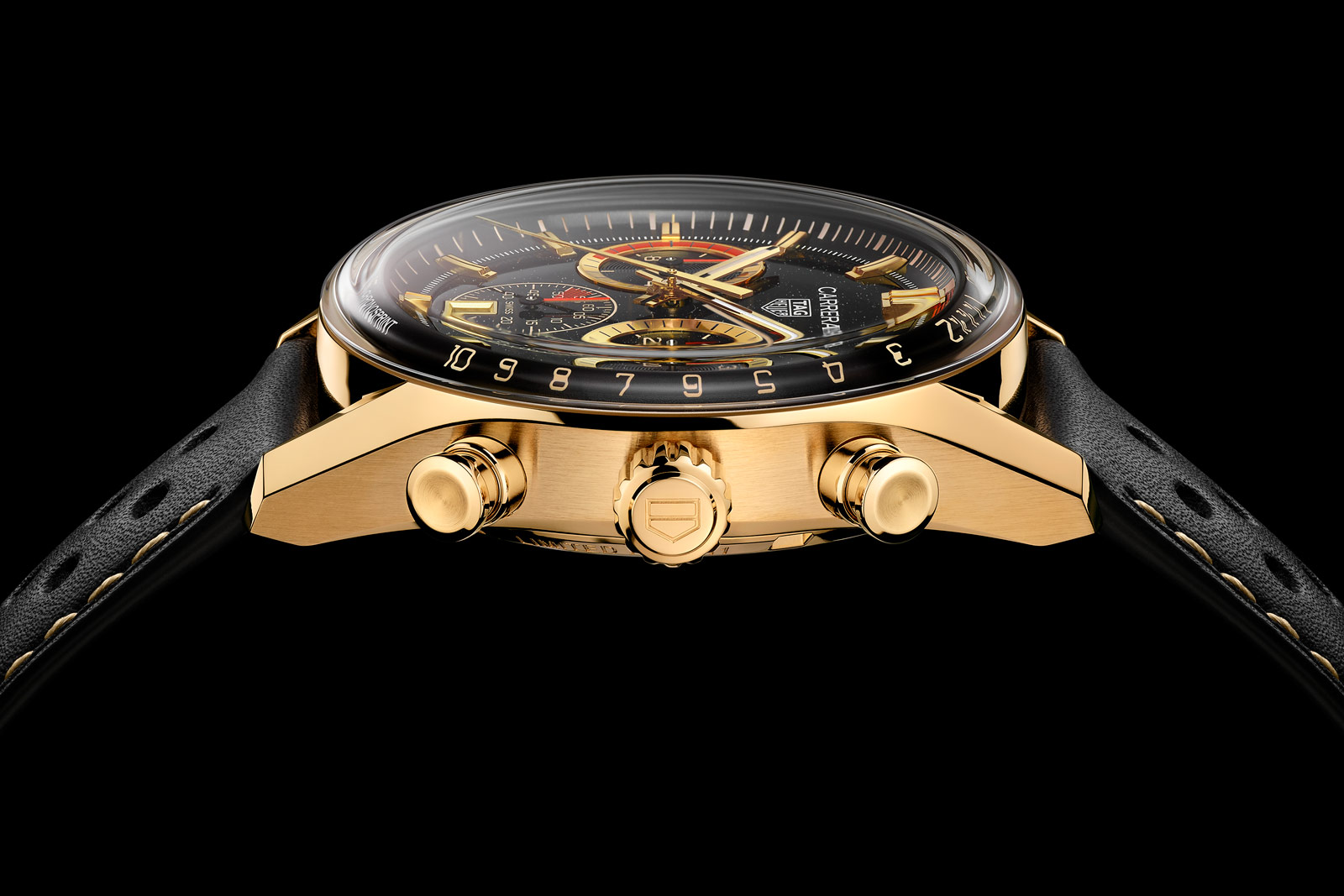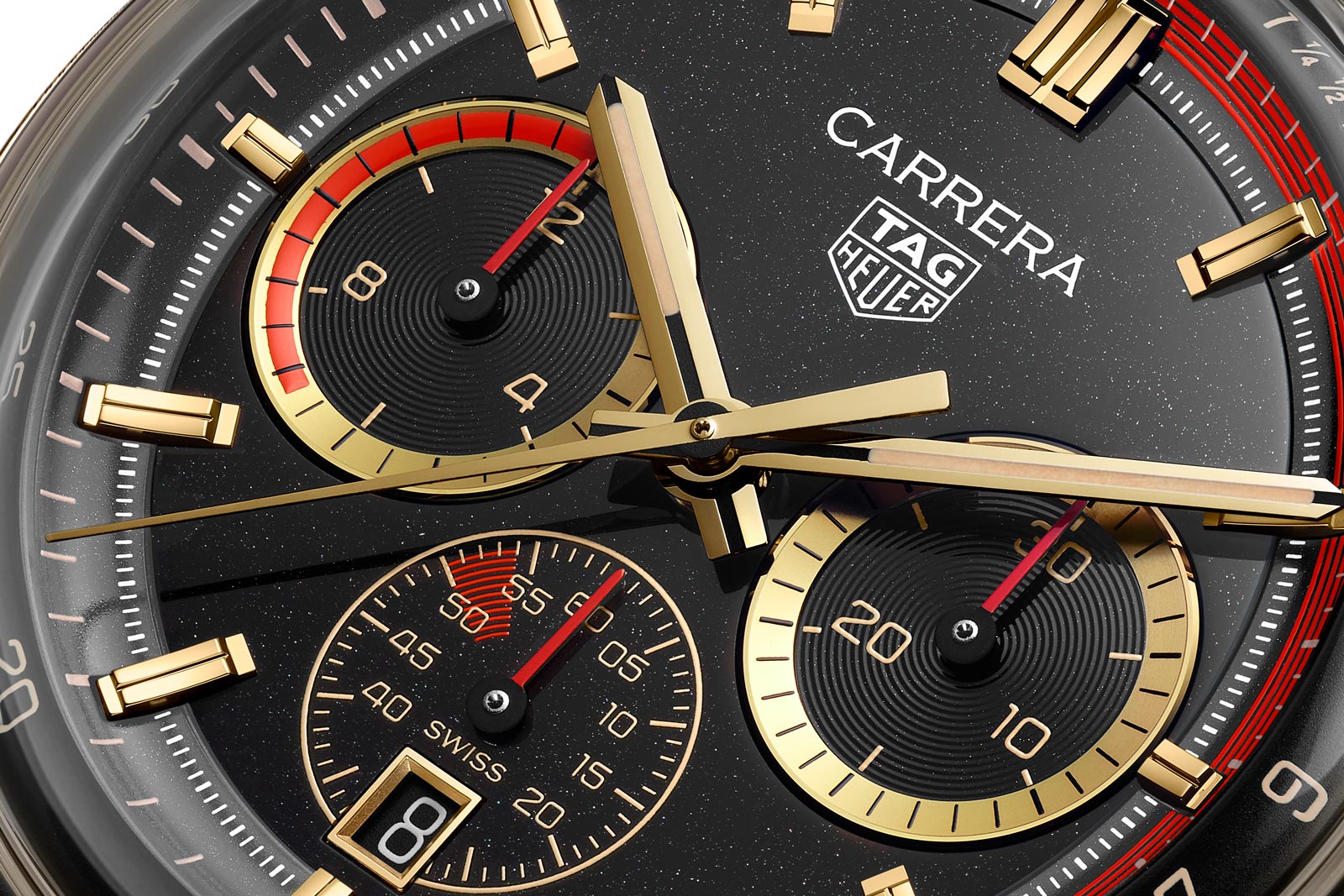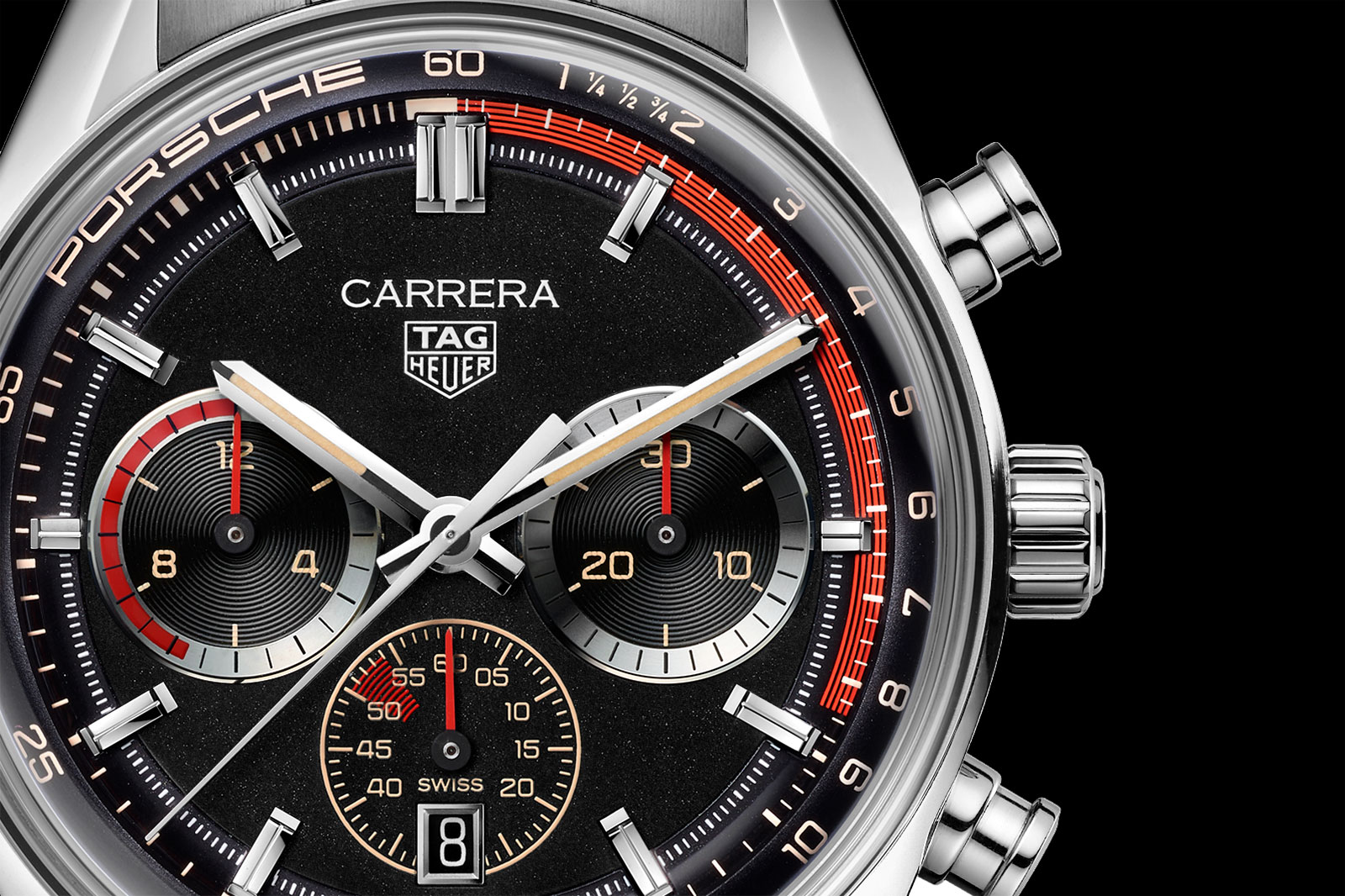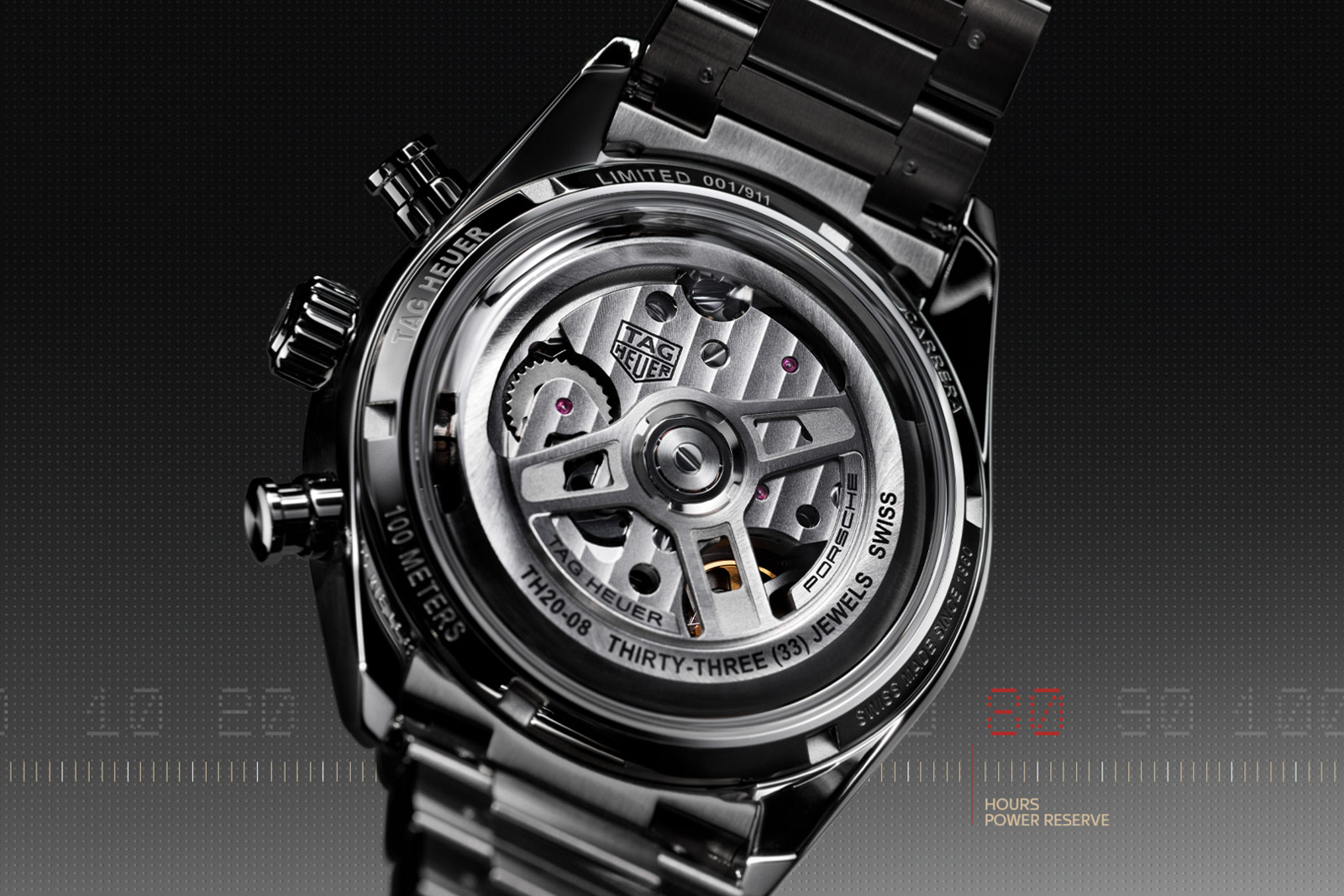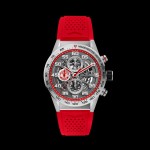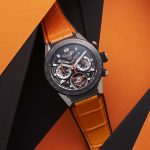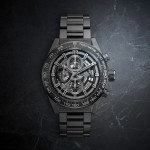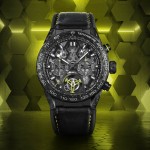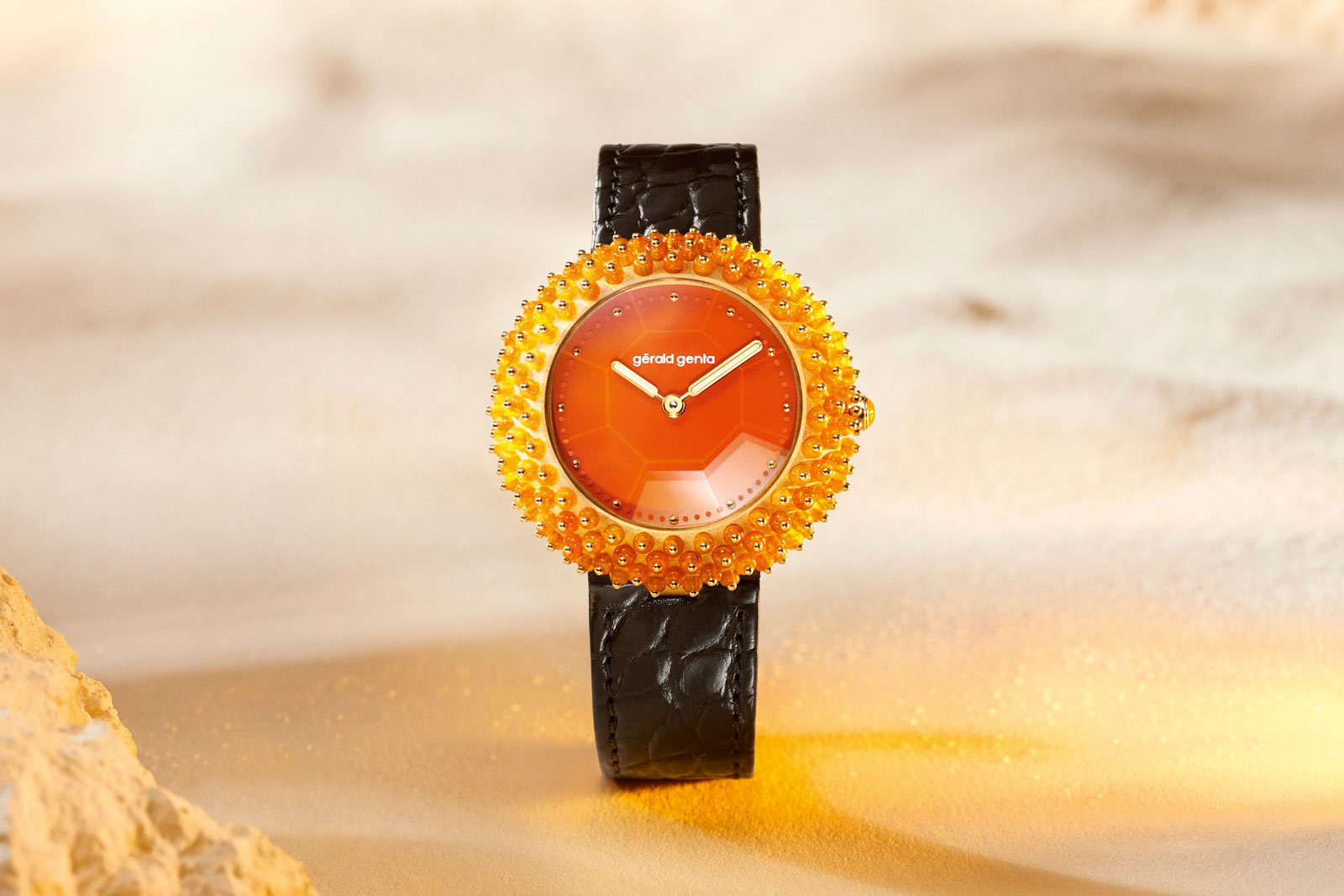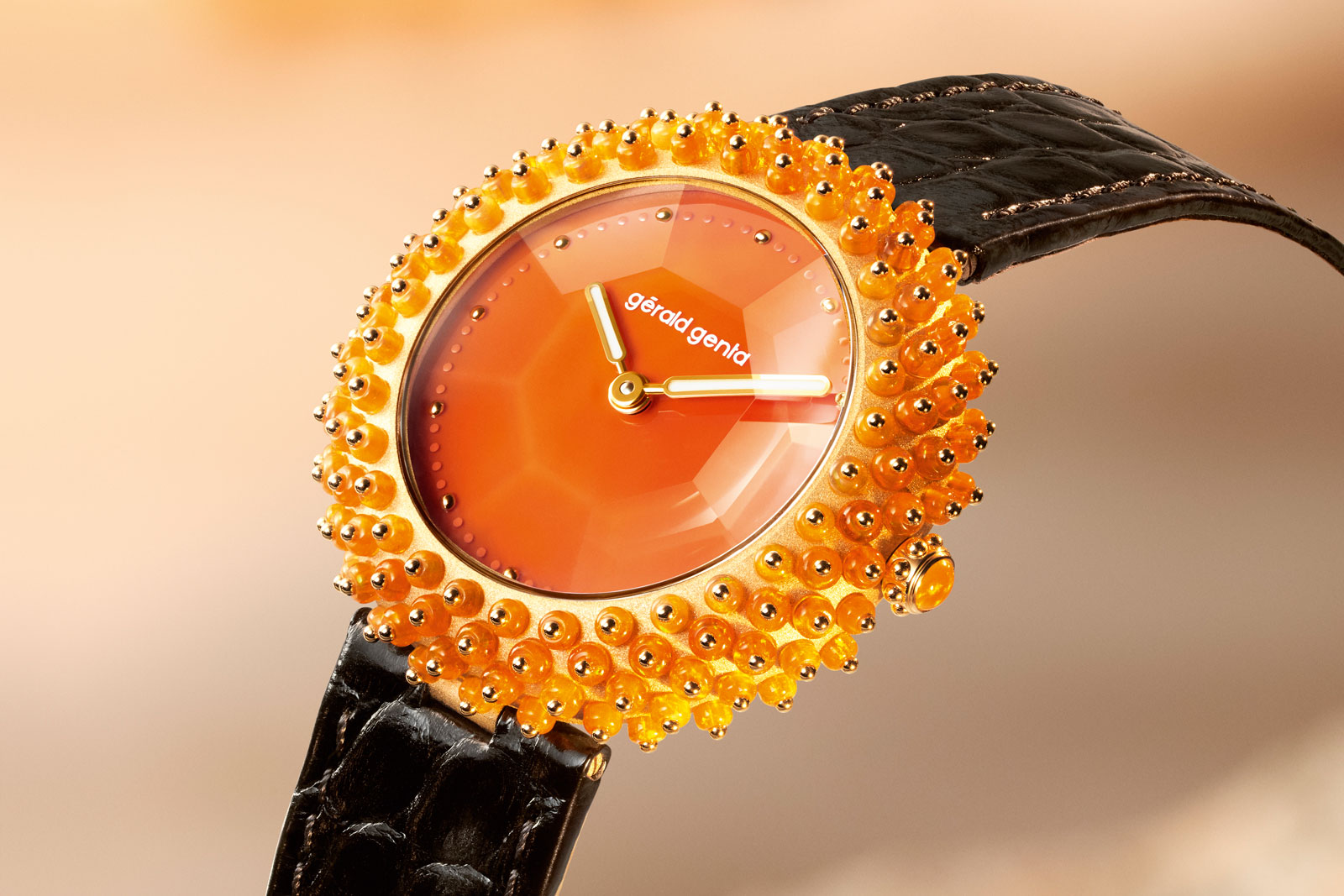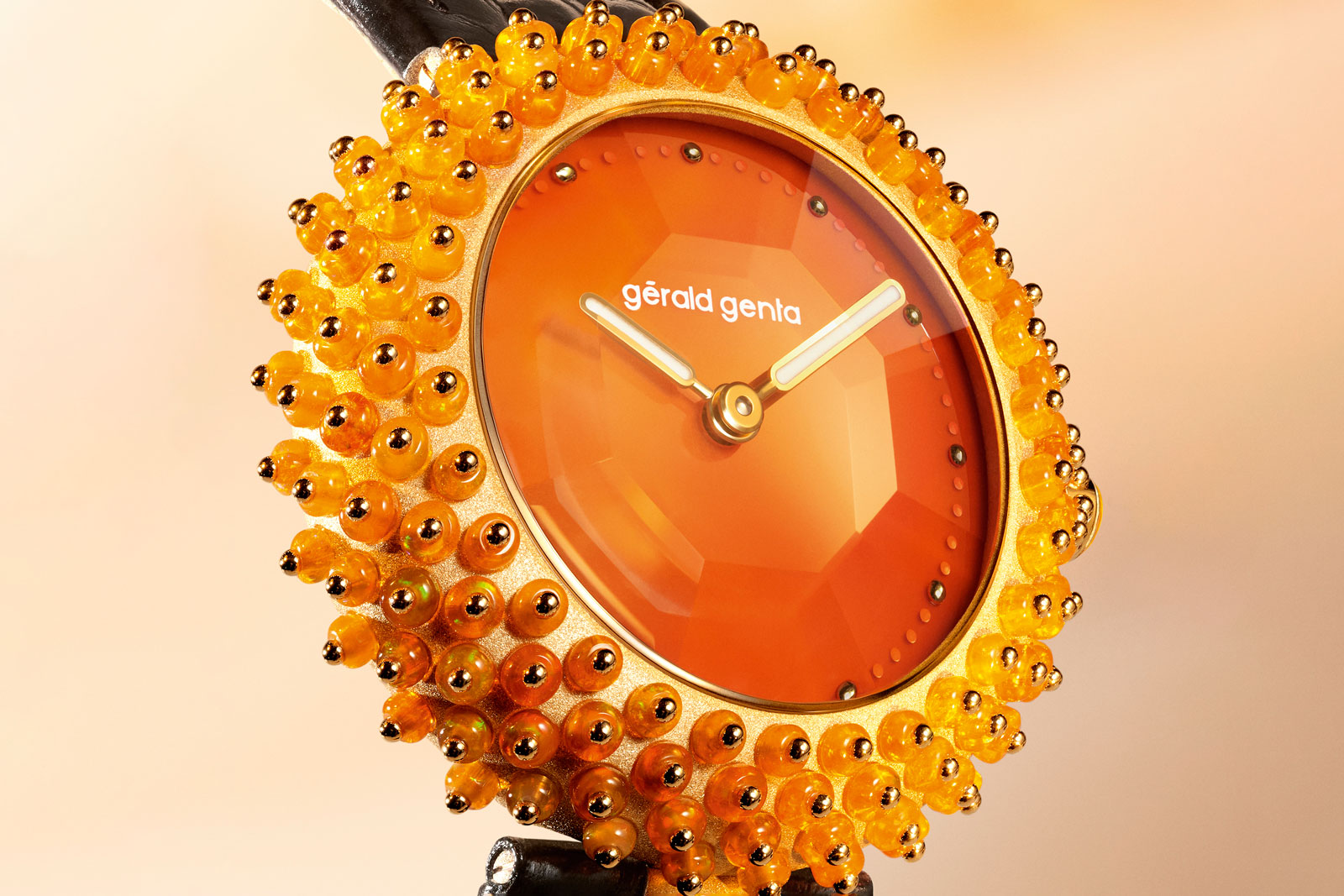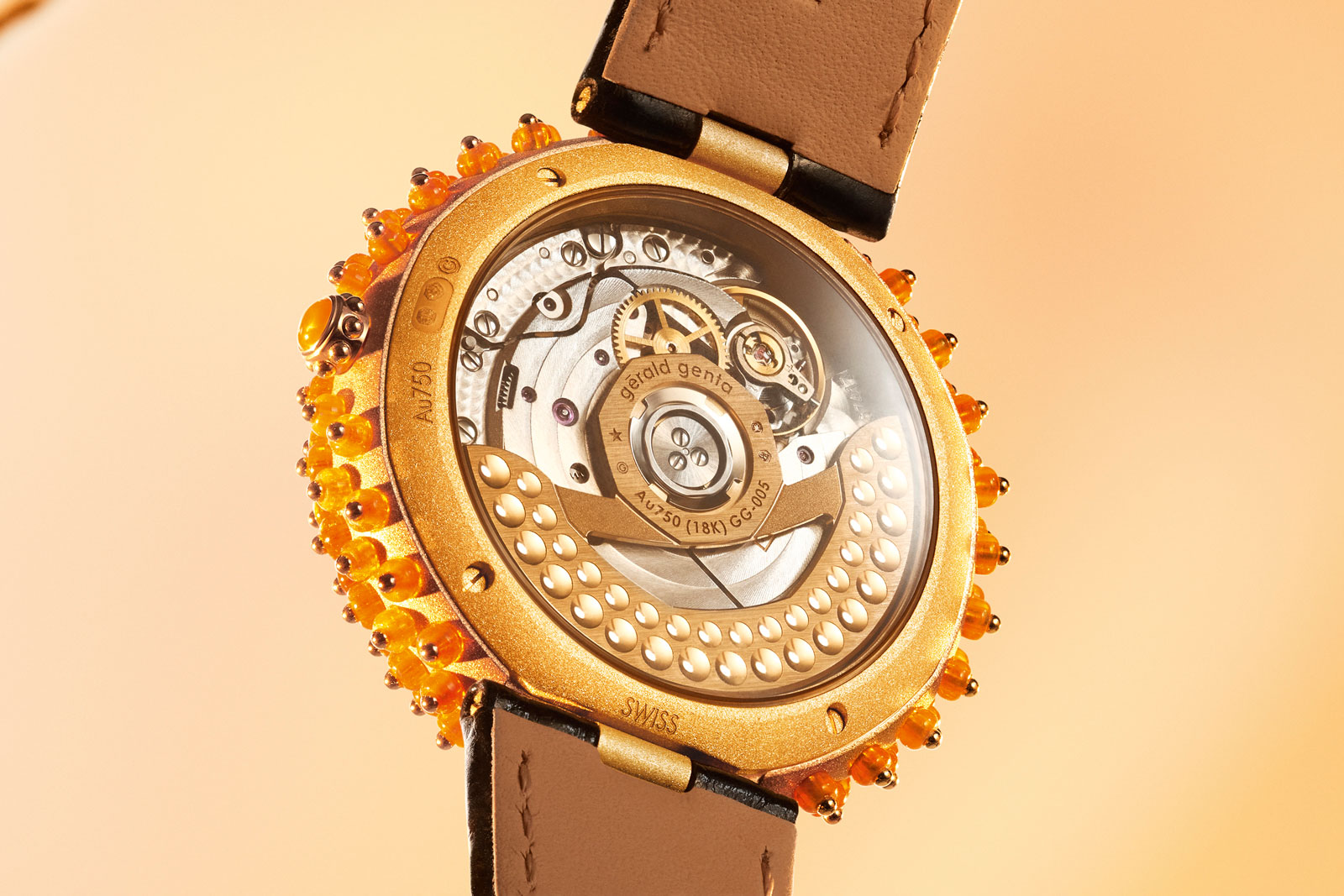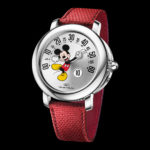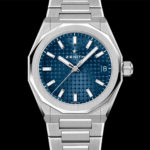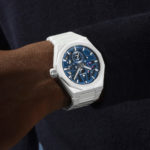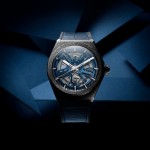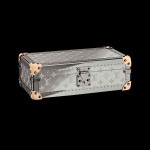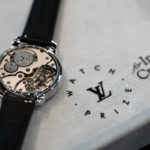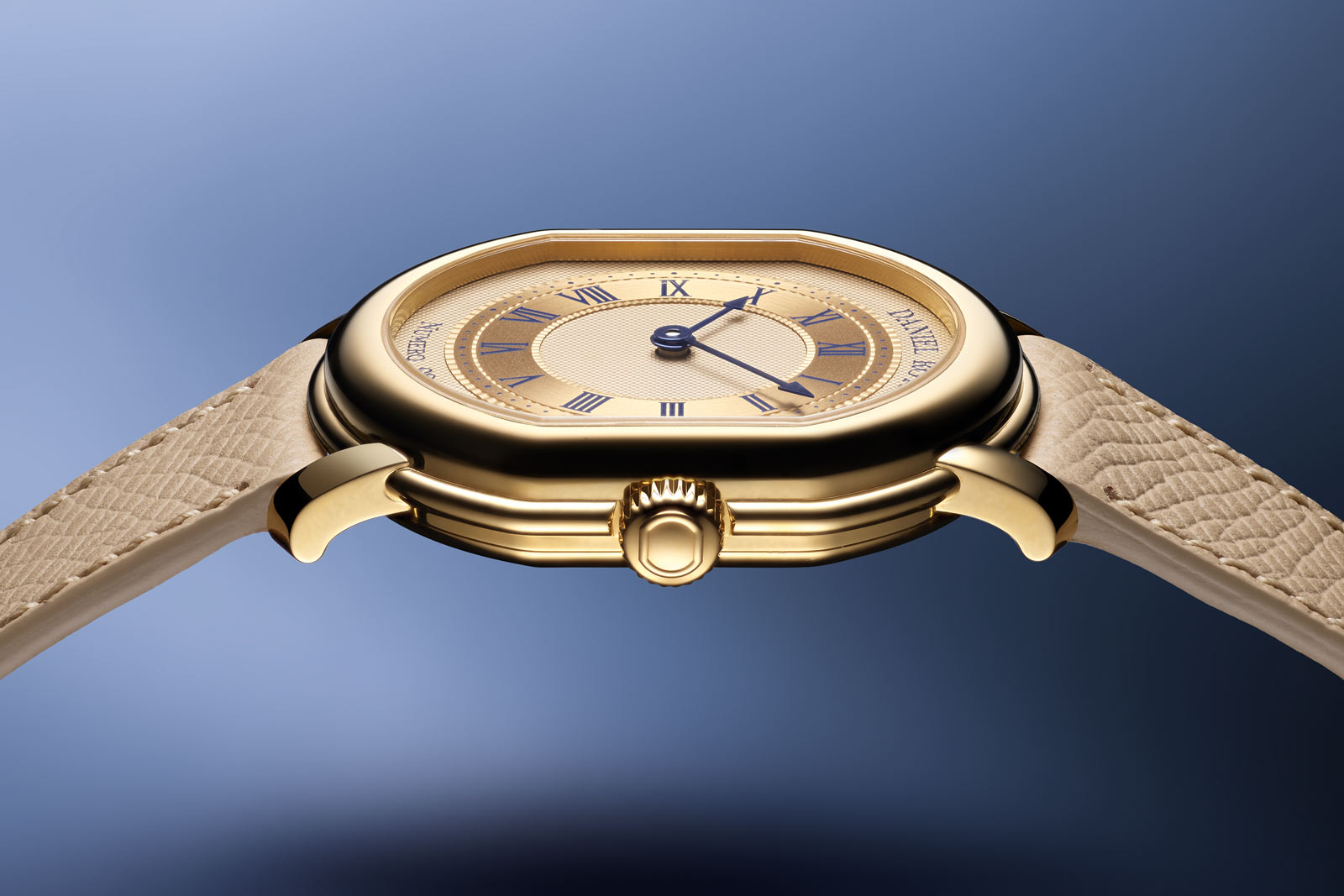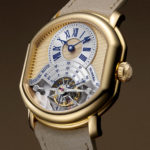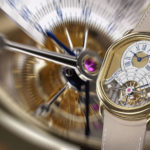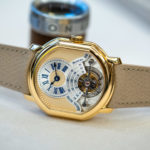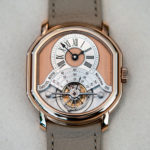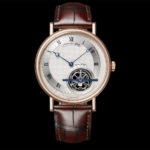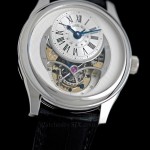Perhaps Louis Vuitton’s most famous complication, the Spin Time is a three-dimensional jump hour that was historically synonymous with the original, chunky Tambour case. Now Louis Vuitton has revamped both the complication and case to create the Tambour Taiko Spin Time.
More compact and elegant than its predecessor, the Tambour Taiko is an expertly detailed case matched with restrained “dolphin grey” livery. Also employed in the new Convergence, the new case is home to an equally new family of in-house movements that will be the foundation of Louis Vuitton’s watchmaking. All of the Tambour Taiko Spin Time models – there are four in all, plus two gem-set variants – are equipped with movements from this family.
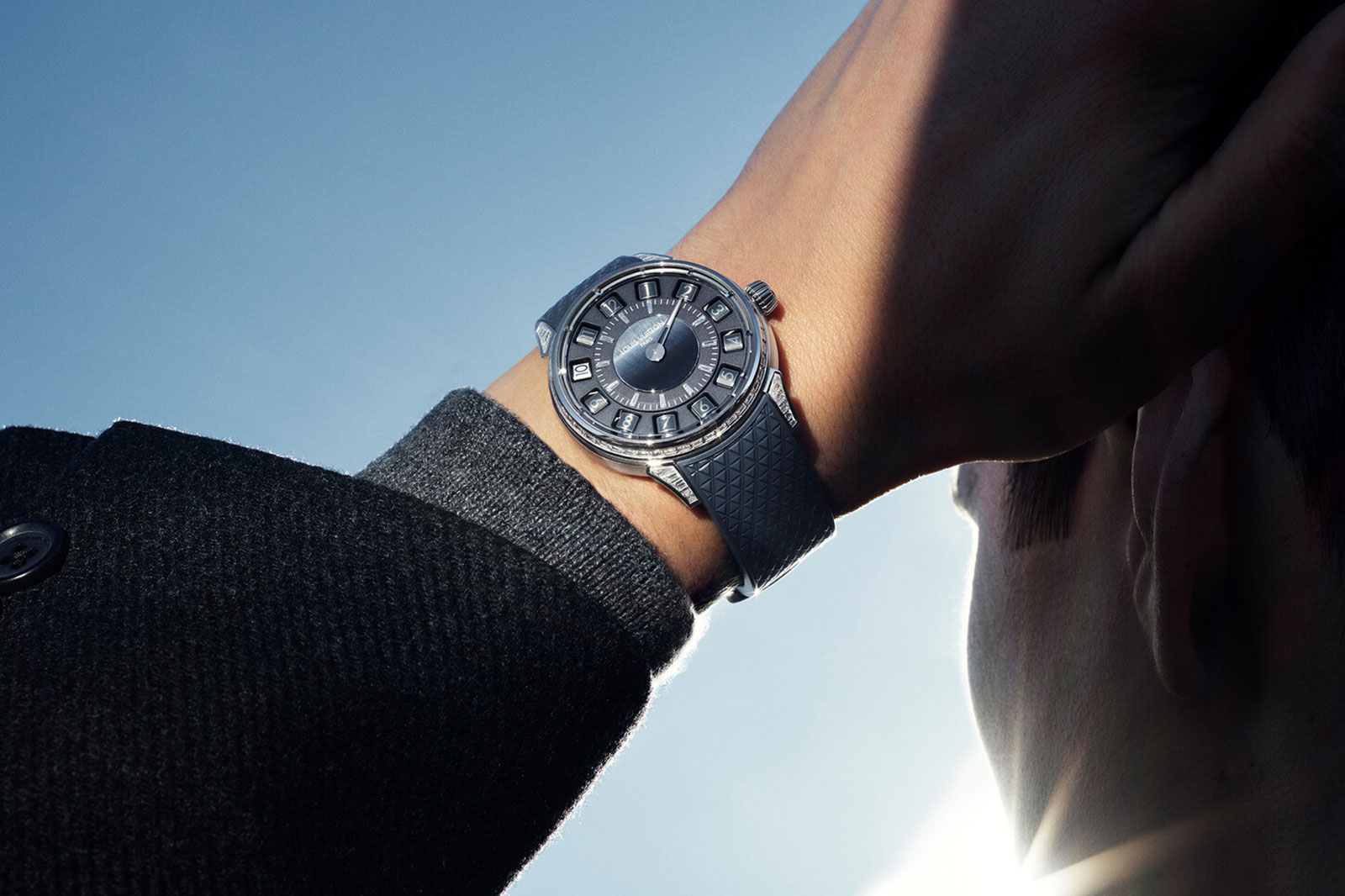
The line-up starts with the 39.5 mm base model, while the rest are all 42.5 mm. They include the Spin Time Antipode with a novel world time function, and the top-of-the-line Tambour Taiko Spin Time Flying Tourbillon combining the jumping hours complication with a central tourbillon. All feature the signature Spin Time display of jumping cubes that indicate the current hour with a contrast-colour face.
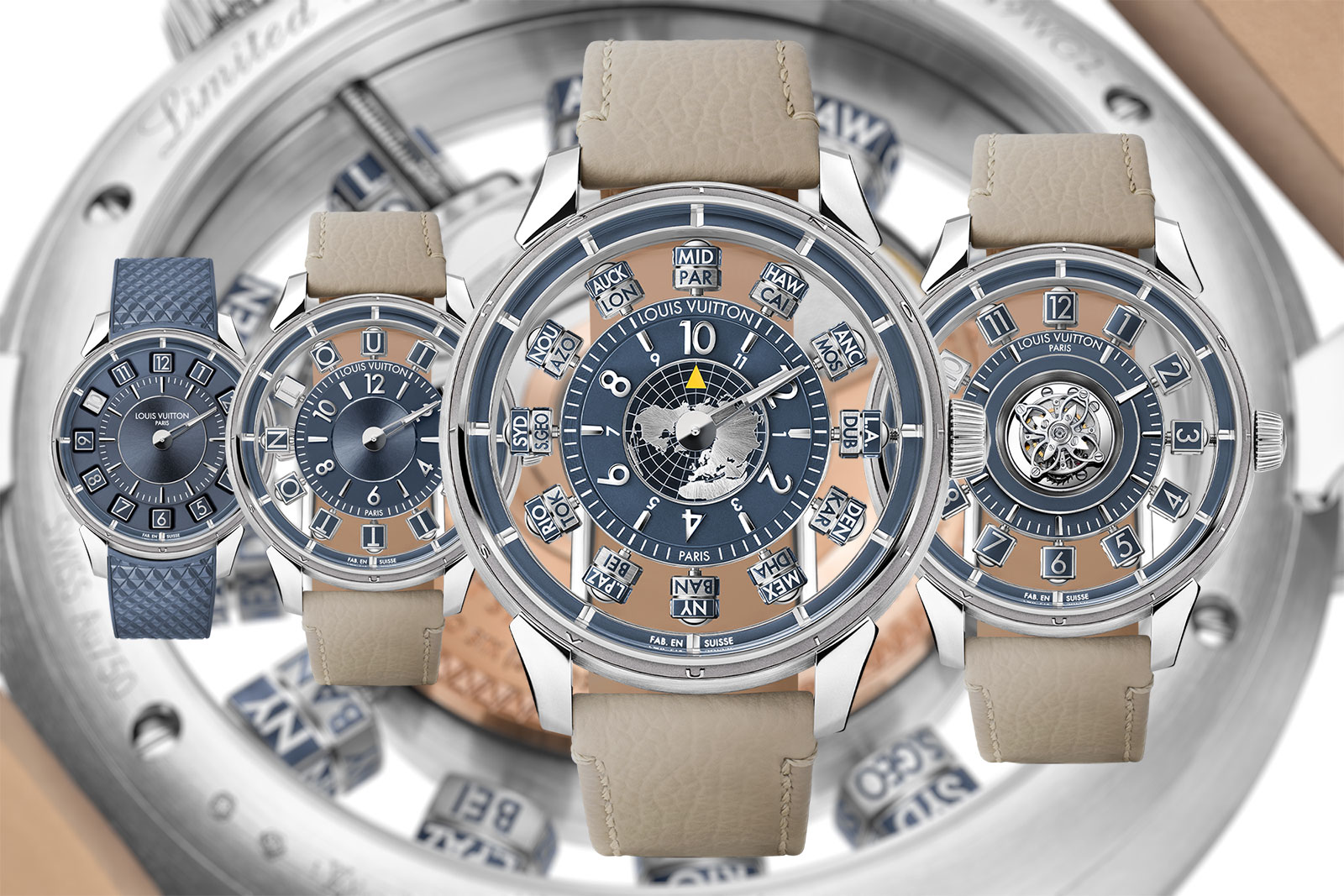
From left: Spin Time, Spin Time Air, Spin Time Antipode, and Spin Time Flying Tourbillon (not to scale)
Initial thoughts
Though I like very much the original, chunky Tambour, the redesigned case has a more subtle, refined appeal. The Tambour Taiko is far more wearable and boasts a noticeably higher level of finishing and detail, though it does lose some of the original’s quirky proportions (that you either like or you don’t).
The tolerances and finishing of the lugs are especially impressive, while the new family of in-house calibres is industrial haute horlogerie that is comparable in construction and execution to the movements made by establishment marques. The Tambour Taiko is clearly substantially improved over the original in all respects, and it illustrates the rapid advance of Louis Vuitton’s watchmaking division.
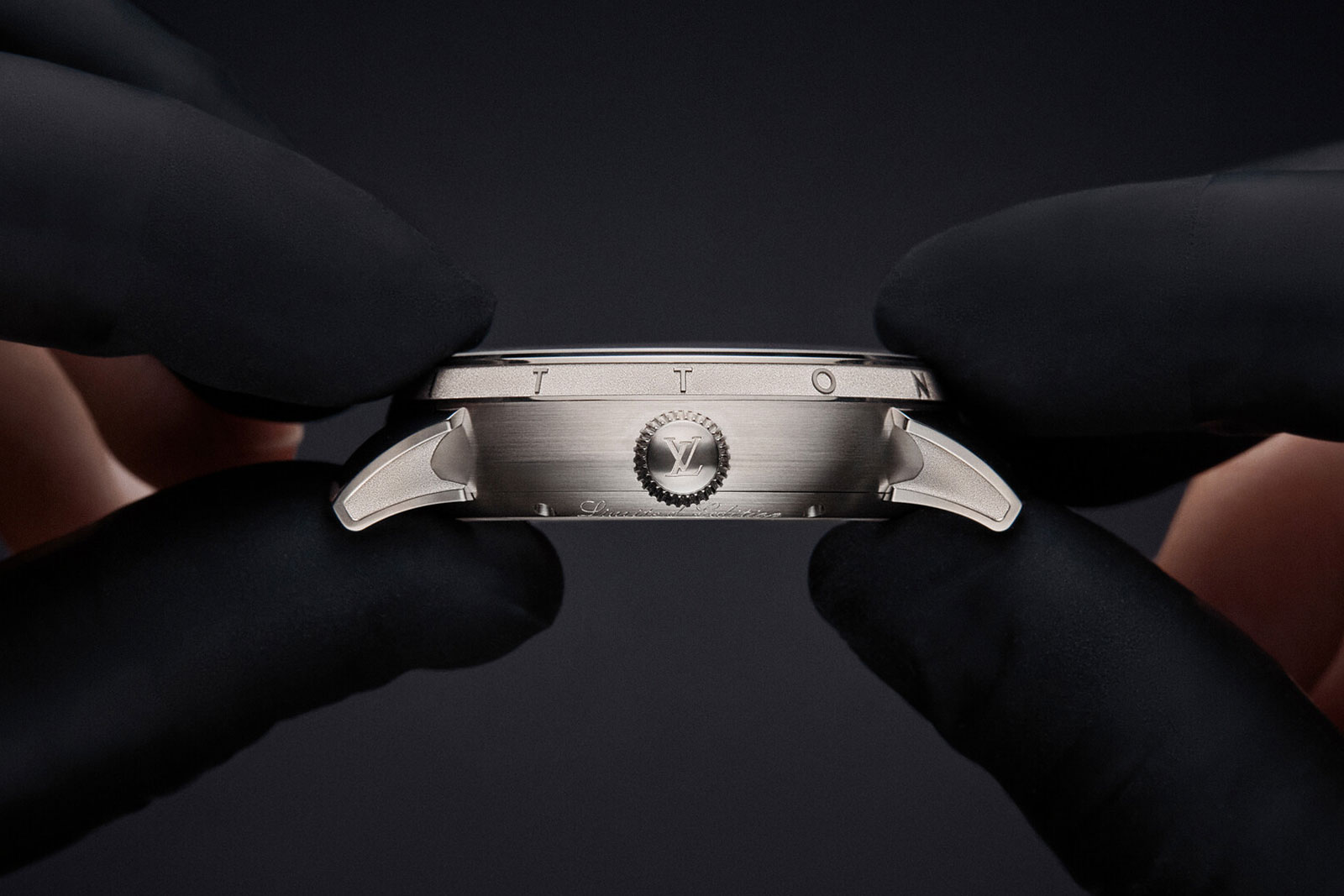
The Tambour Taiko case with its distinctive concave lugs
Of all the watches in the line, the base-model Spin Time makes the most sense. It’s a time-only watch that’s compact, wearable, and water resistant to a surprising 100 m. All that makes it an extremely fancy yet no-frills everyday watch. But the 39.5 mm case feels smaller than it is, which for me means it lacks the presence of the Tambour design.
The Spin Time Air, on the other hand, is bigger and arguably better, albeit at a higher price. It’s also available with added complications, most notably the ingenious, cube-based world time, but the time-only Spin Time Air is the purest and most appealing in my eyes.
Lastly, I do wish the new Tambour Taiko was dressed in more colours than “dolphin grey”, especially since the earlier Spin Time watches were often clad in many colours. That said, this low-key grey may be all that’s available for now, but I am sure we will see a wider palette being employed in the future.
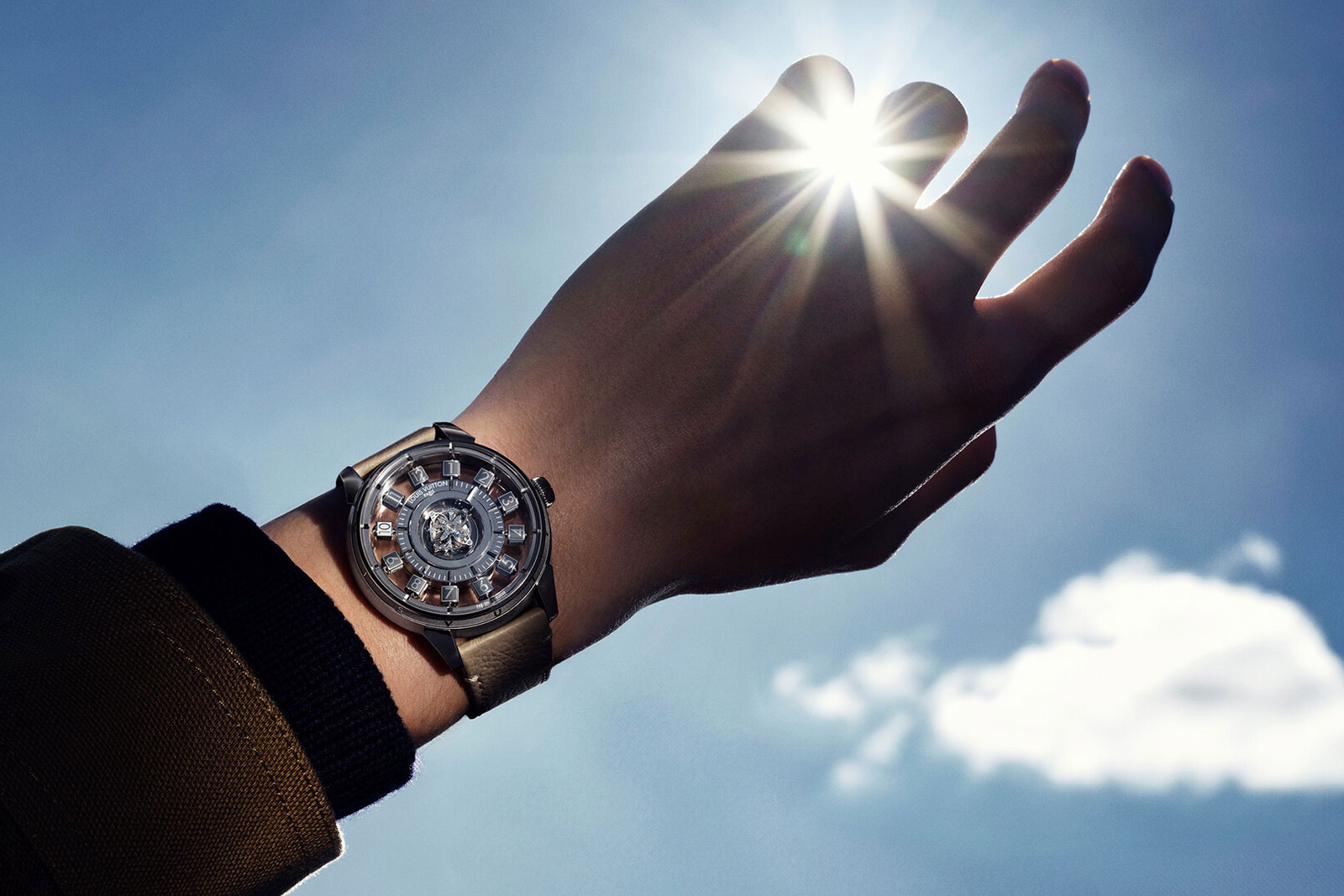
The version with a central flying tourbillon
A new family
The Tambour Taiko is the beginning of a new line of watches. United in their discreet “dolphin grey” livery, the inaugural models shown here are not officially limited editions, but will be produced in limited numbers according to insiders.
Although all of the Tambour Taiko Spin Time models are visually similar to past Spin Time watches, they are entirely different in practically every respect. More than anything else, the new models underscore Louis Vuitton’s extensive vertical integration of its La Fabrique du Temps (LFT) manufacture in Geneva, which now produces movements, cases, dials, and various metiers d’art.
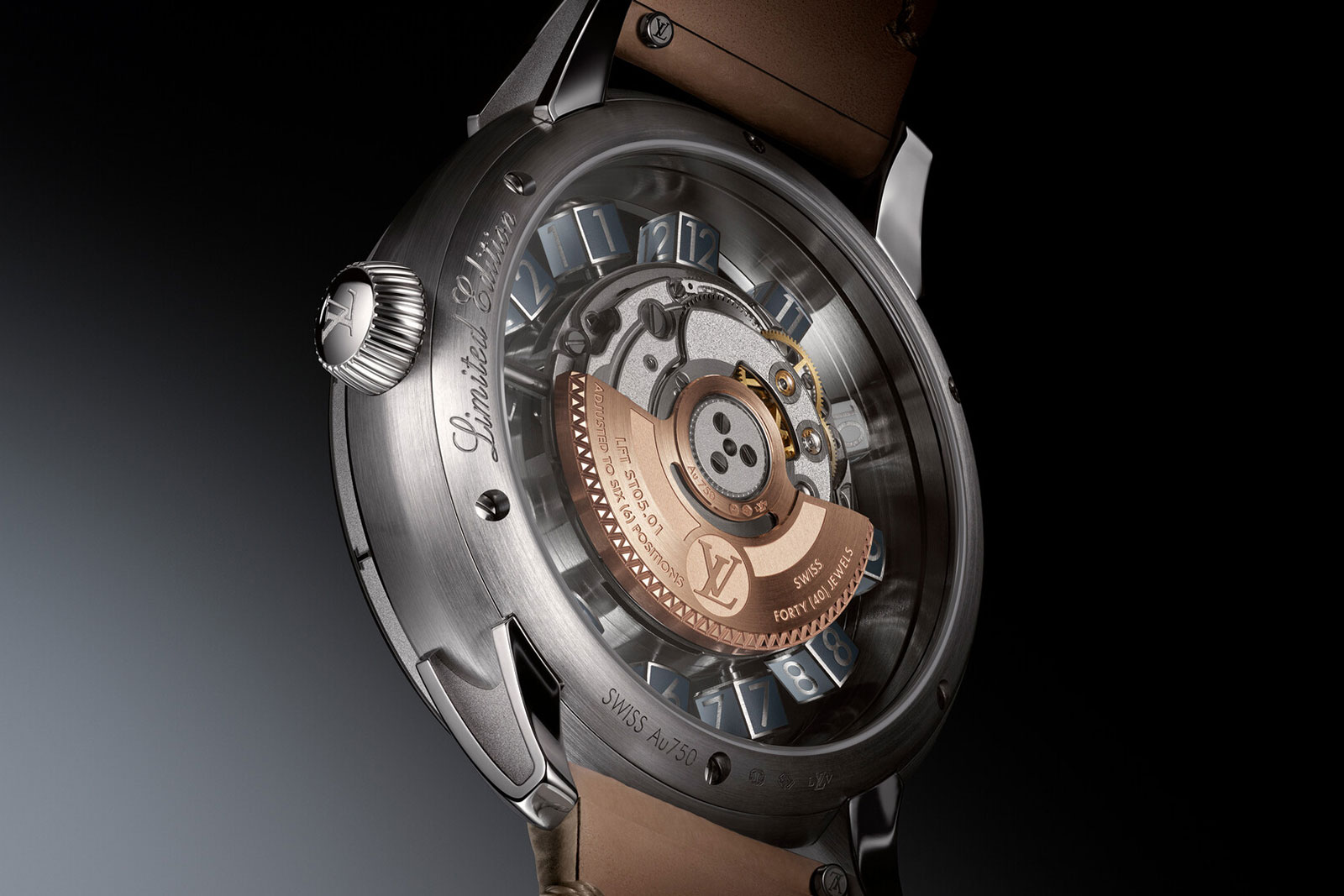
The LFT ST12.01 of the Spin Time Air
Conceived and produced at the recently established case-making facility in Geneva, the Tambour Taiko case is a sleek, refined evolution of the original Tambour, which was distinctive but somewhat squat. The Tambour Taiko retains the signature inclined case flanks, but add a bezel with relief letters that spell out “Louis Vuitton”, keeping the branding discreet.
More interesting are the lugs, which are all separate pieces secured to the case. This construction allows the lugs to be finished in great detail, with polished tops and sides, while the concave interior is frosted by laser – finishing the curved inner surface would be otherwise impossible. The same laser frosting is applied to the recessed areas of the bezel.
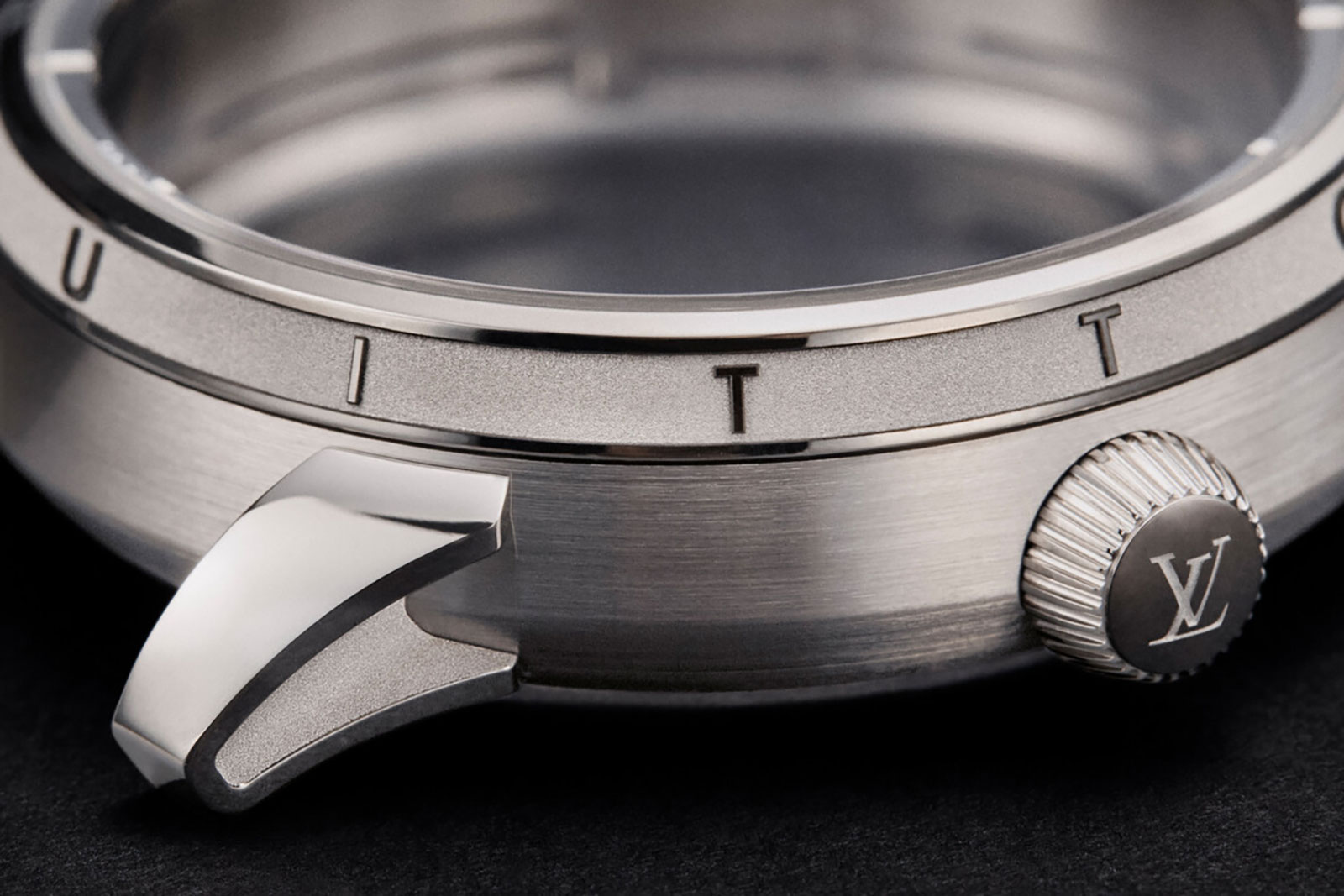
The frosted inner surfaces are subtle but create a pleasing contrast
Similarly, the LFT STXX calibres that equip the Tambour Taiko Spin Time collection are in-house creations of LFT. The collection debuts with four distinctive calibres that nonetheless share the same architecture and specs, namely automatic winding, a 40-hour power reserve, and a 4 Hz balance wheel.
The power reserve is short by modern standards, but that is likely due to the energy-intensive nature of the Spin Time display as well as the relatively small size of the movement compared to the case. The family of movements will presumably grow to include new calibres with longer power reserves in due time.
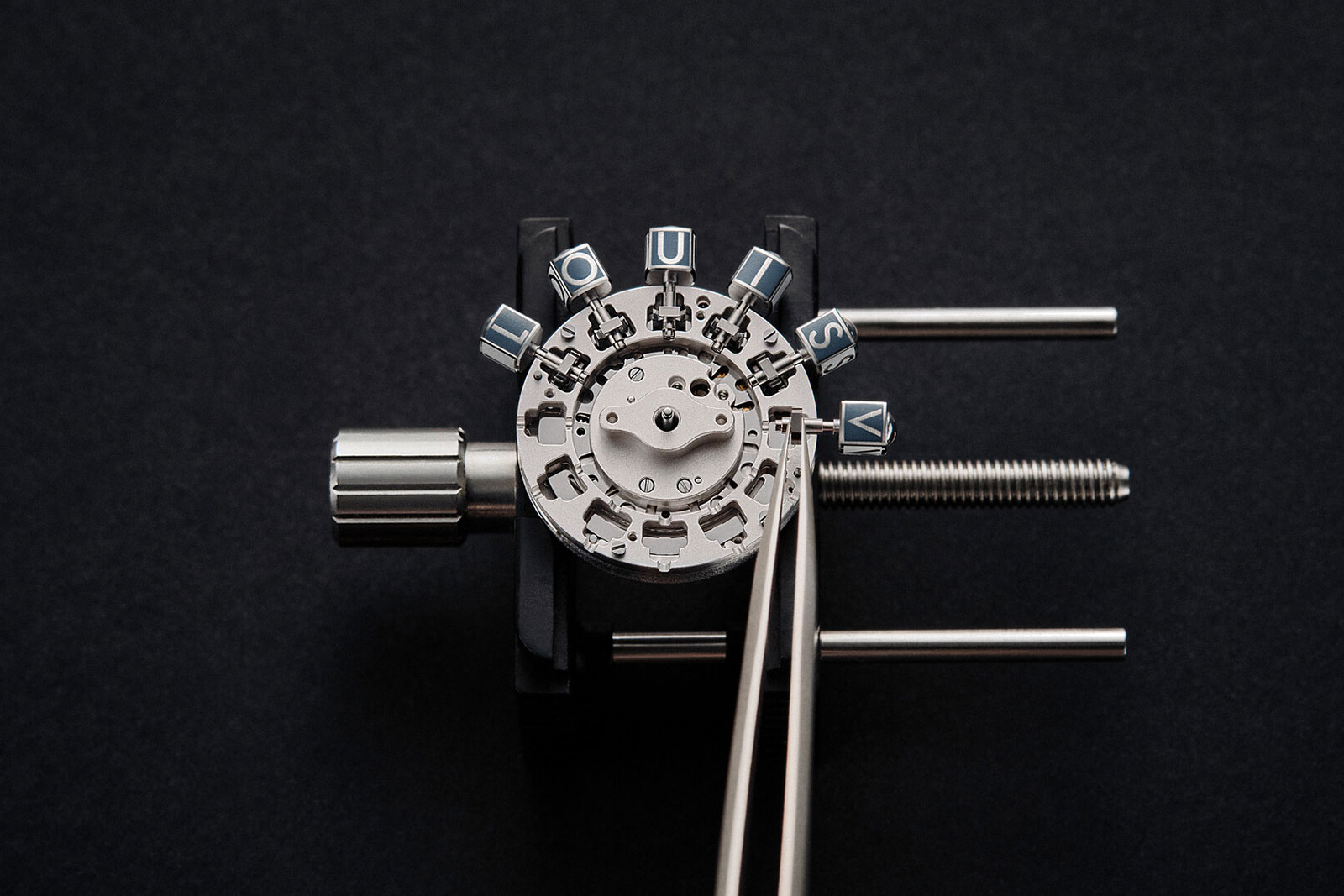
Each jumping cube is driven by a Maltese cross
The movements sport the features expected of a high-end industrial calibre, including a free-sprung balance and hairspring secured by a Geneva-style stud carrier and the absence of wire springs. Other embellishments include clear jewels and a solid 18k pink gold rotor with an engraved “V” motif on the rim.
More unusual is the bridge decoration, which features recessed, frosted surfaces surrounded by raised borders with a concentric brushed finish. Going forward, this will be standard style of decoration for Louis Vuitton’s in-house movements. It was seen earlier in the Tambour of 2023, but the execution was not quite as refined in that (perhaps because those movements were made by an external supplier).
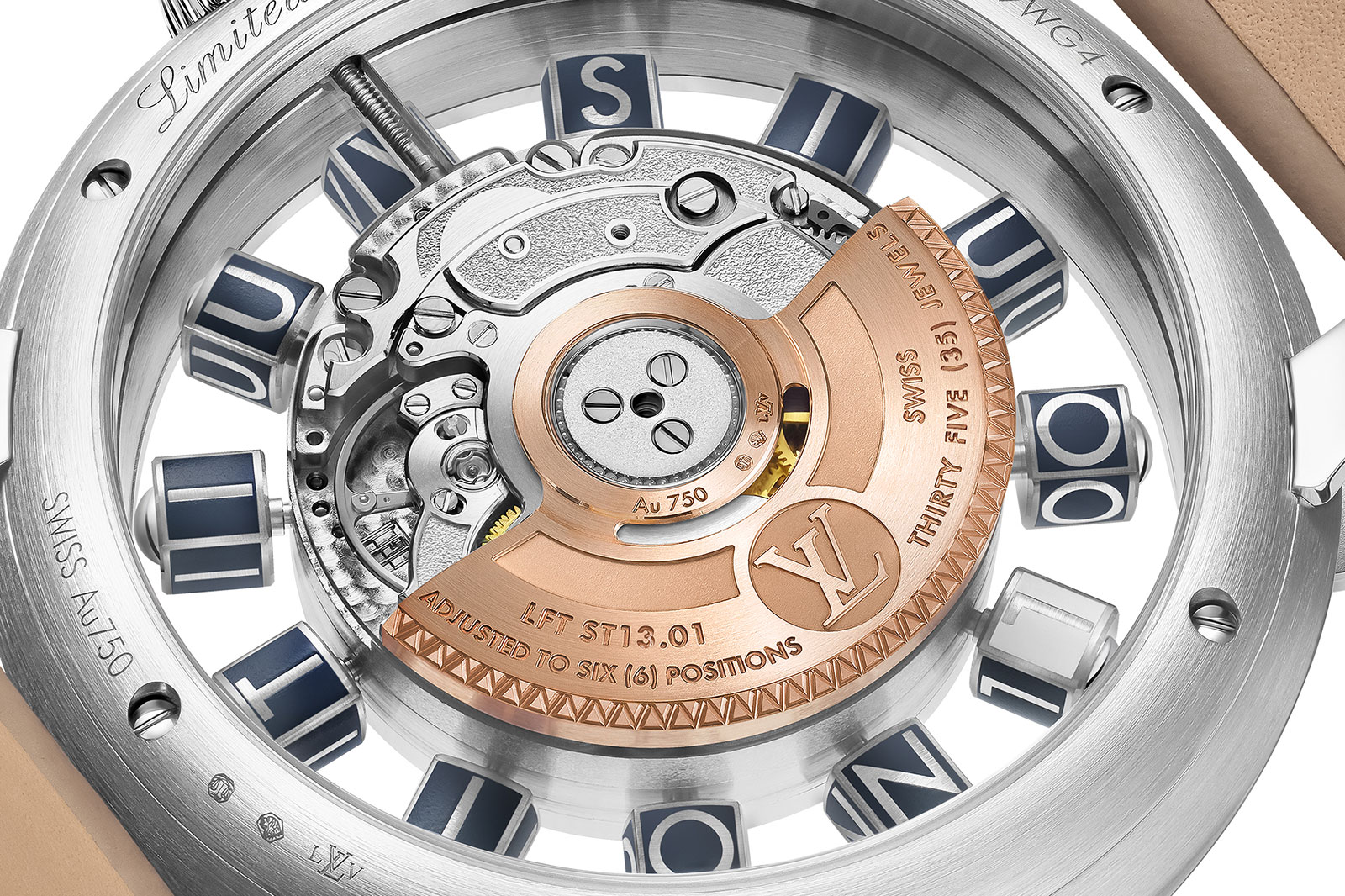
The movement decoration will be applied to all in-house calibres in the future
The four new models also share the same Spin Time mechanism, which is functionally identical to the original but improved in technical terms. The new jumping display is instantaneous, with two cubes jumping at the same time, one moving forward to show the current hour, and the other to indicate the prior hour.
More notably, the jumping hours can be set forwards or backwards, a convenient addition that is already uncommon in conventional jumping hours displays.
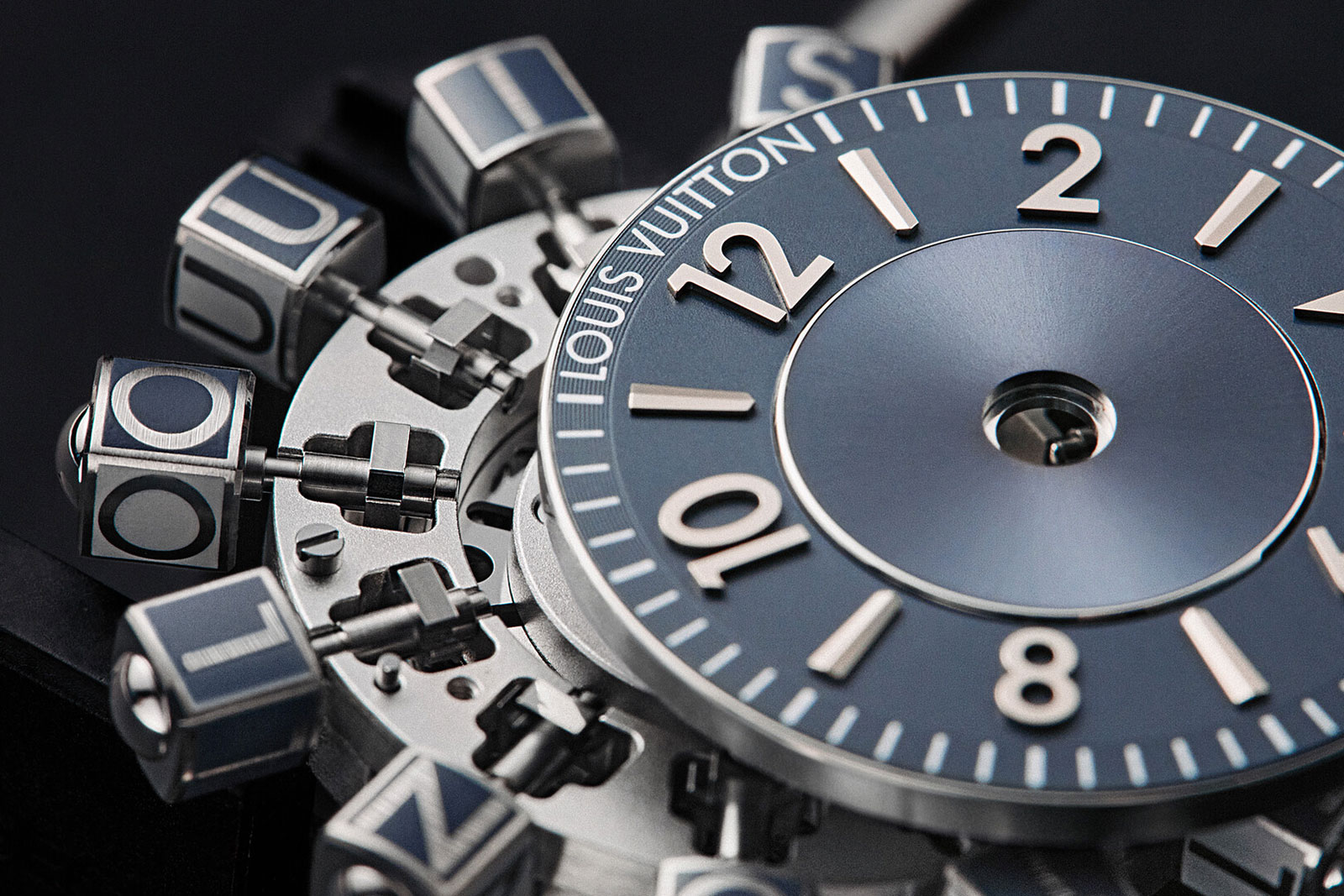
The base model in the new collection is the Tambour Taiko Spin Time. This is time-only watch with a minute hand along with the jumping hours display. It’s contained inside a compact, 39.5 mm case that a little over 12 mm high. The size is convenient and wearable, while the 100 m water resistance makes this a surprising versatile everyday watch.
It’s available in the standard grey-blue livery, but also in a jewelled version with baguette-cut diamonds on the bezel and lugs, as well as a hawk’s eye insert on the dial. Because of the setting and case size, the jewelled model is surprising discreet despite the diamonds.
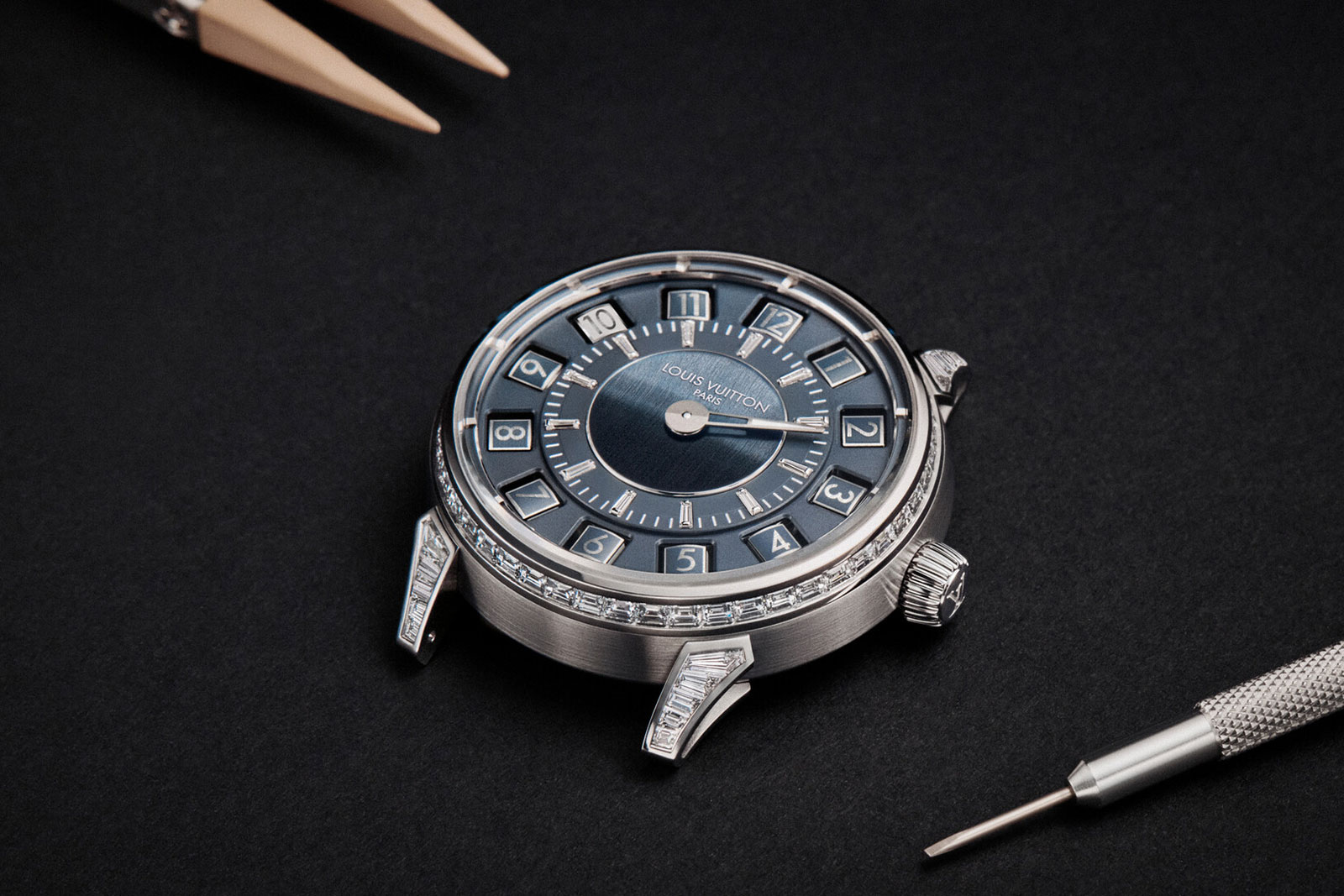
The jewelled Spin Time with a hawk’s eye dial centre
Bigger and bolder is the Tambour Taiko Spin Time Air, which features “floating” cubes for the jumping hours display. The chapter ring around the cubes has been removed, leaving them seemingly suspended in mid air for a striking visual effect.
It is presented in a large, 42.5 mm case in white gold that stands 12.45 mm high, giving it proportions reminiscent of the first-generation Tambour.
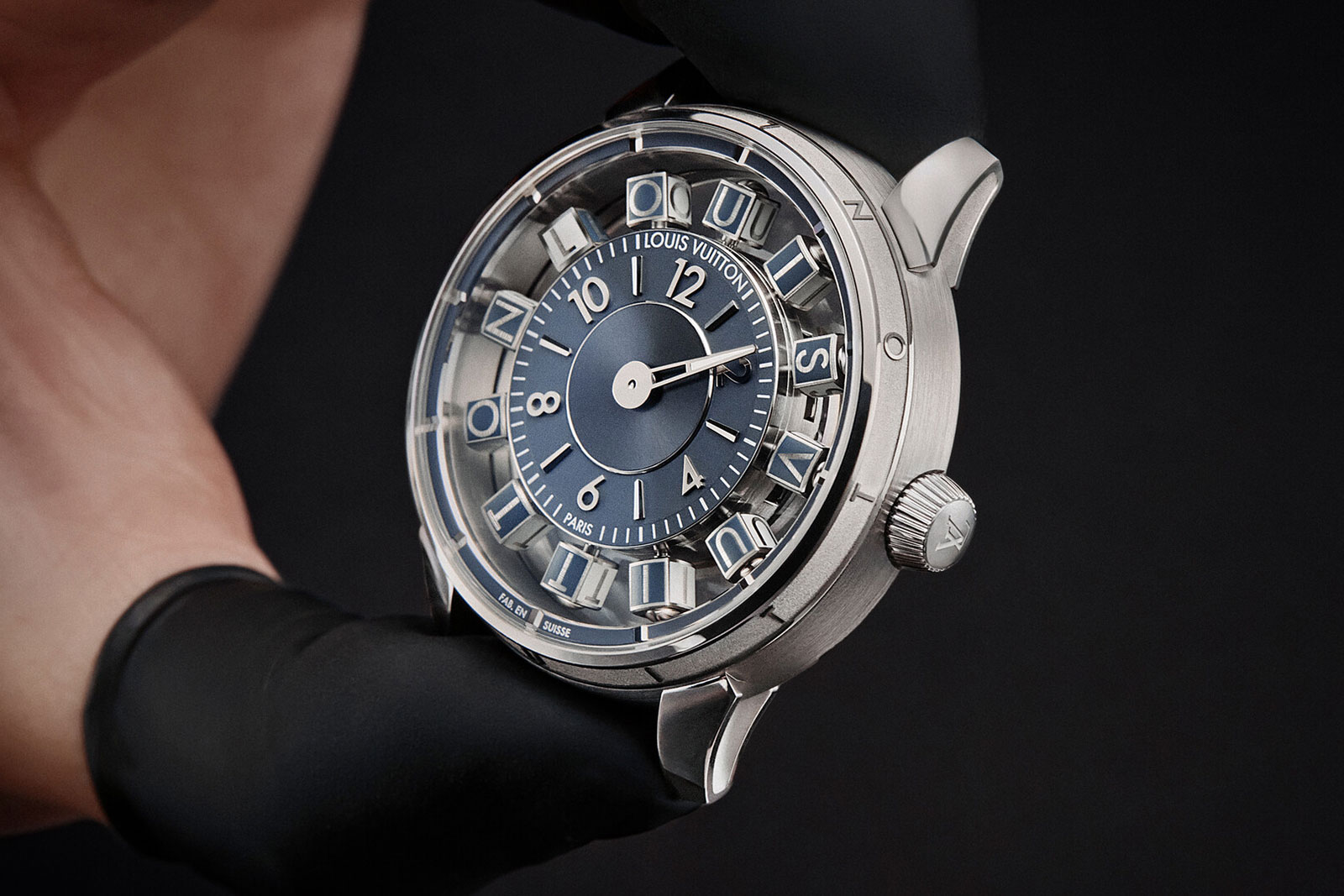
The Spin Time Air
This too is available as a gem-set model, but this time with snow-set diamonds on the case, dial, and cubes, accented with a hawk’s eye dial centre. But unlike its smaller counterpart, this makes a statement as a jewellery watch.
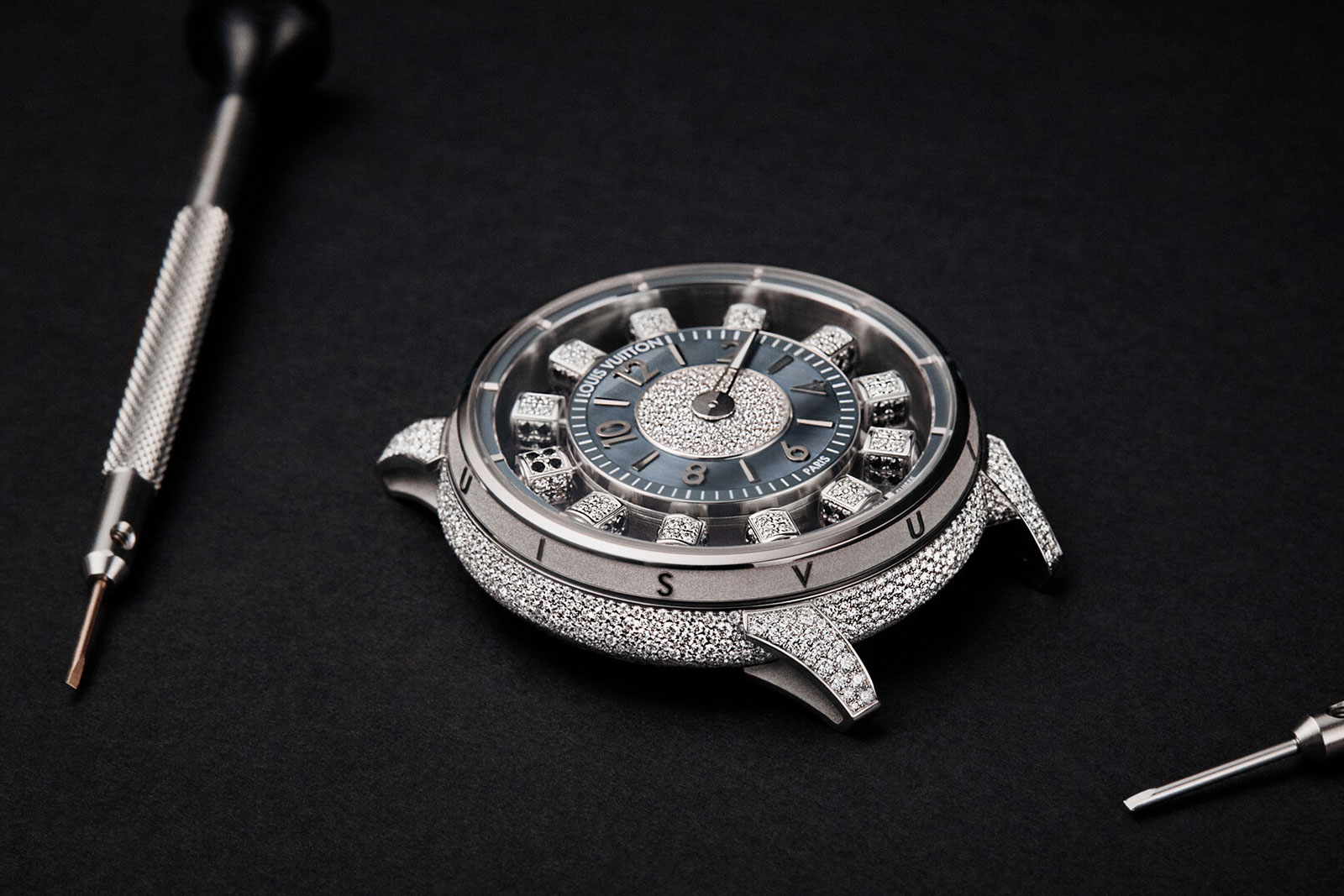
The snow-set sibling
Equipped with a similar “floating” display is the Tambour Taiko Spin Time Antipode, except that the cubes form an inventive world time display that is surprisingly intuitive to read.
Minutes are indicated by a hand, while hours are indicated by a yellow pointer against a rotating disc bearing a 12-hour scale. Adjacent to each of the hour numerals is a corresponding cities cubes, but the twist is that each cube bears the name of two cities.
Each pair of cities are exactly 12 hours apart, so each cube indicates time in two cities, but on opposite sides of the day. The time shown below, for instance, is 4:05 am in New York and 4:05 pm in Bangkok.
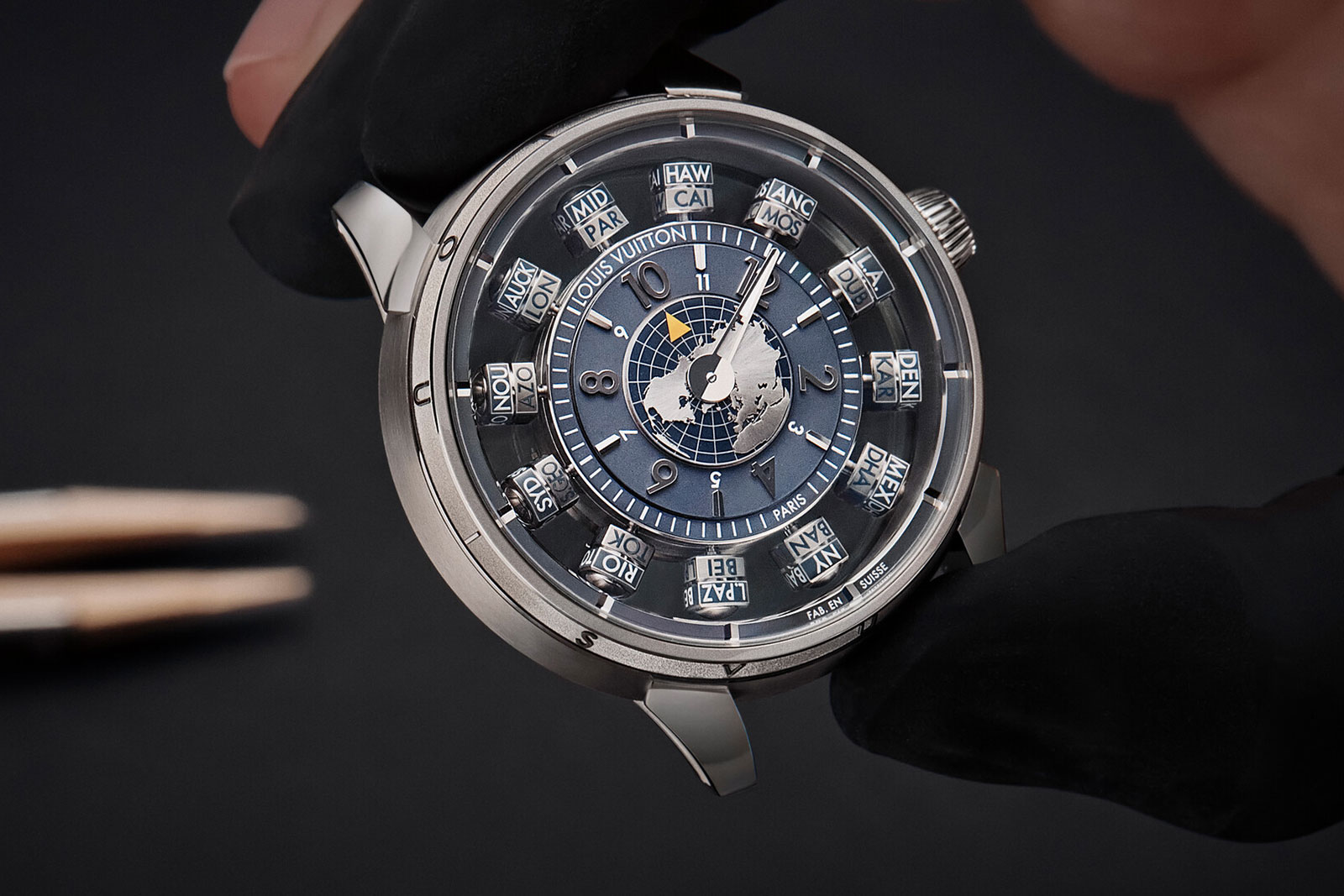
The innovative Antipode
The flagship complication for the line is the Tambour Taiko Spin Time Flying Tourbillon. A riff on earlier Spin Time models with a central tourbillon, this is equipped with the LFT ST05.01 movement hailing from the same family as all the other calibres in the line. However, it has been constructed to position the regulator in the centre of the dial, creating the central flying tourbillon.
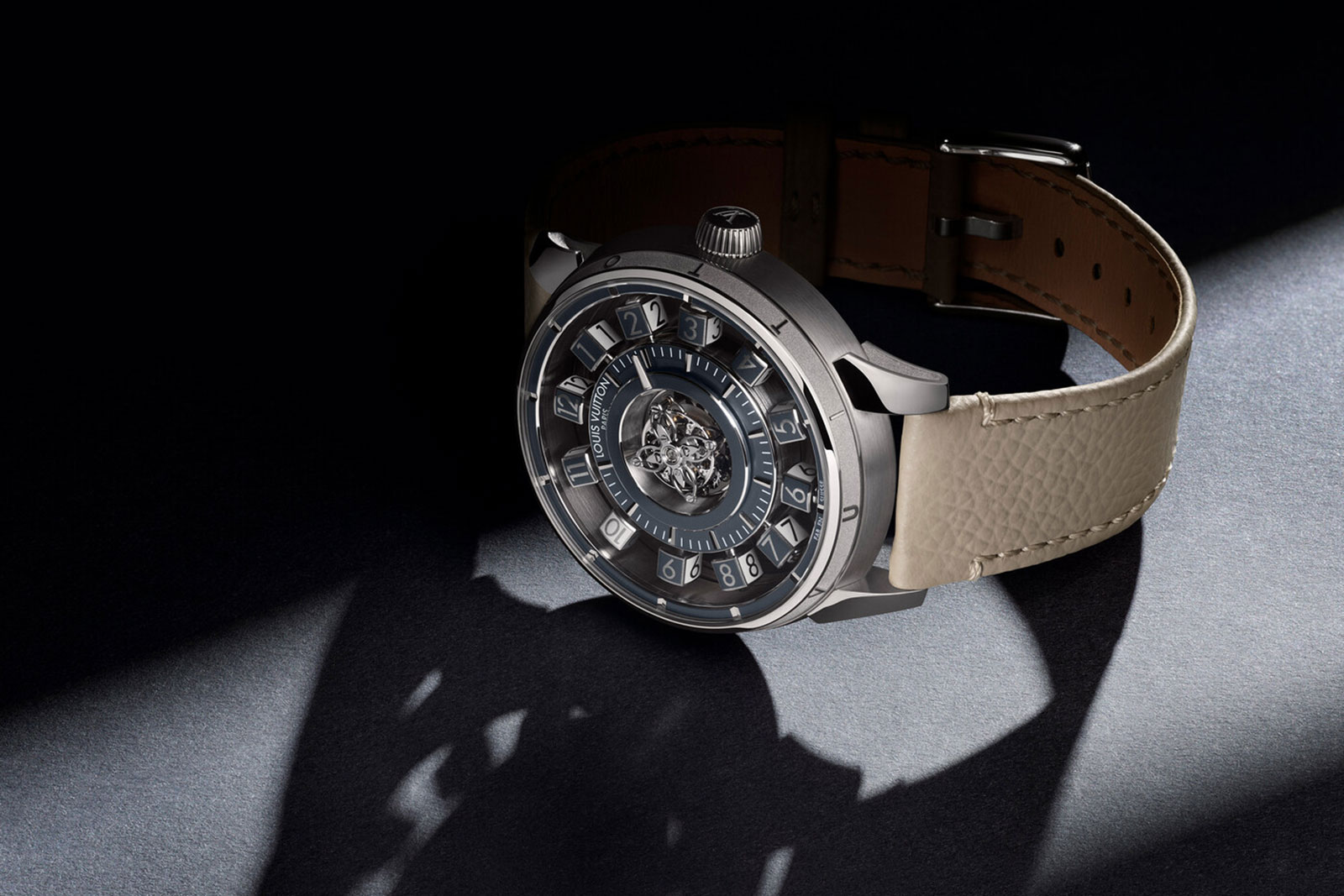
Notably, this retains the same dimensions as the Spin Time Air, despite having the tourbillon located in the centre of the dial. This reflects the clever movement construction that locates most of the moving parts on the periphery of the calibre, leaving enough volume in the centre to accommodate the tourbillon without increasing the height significantly.
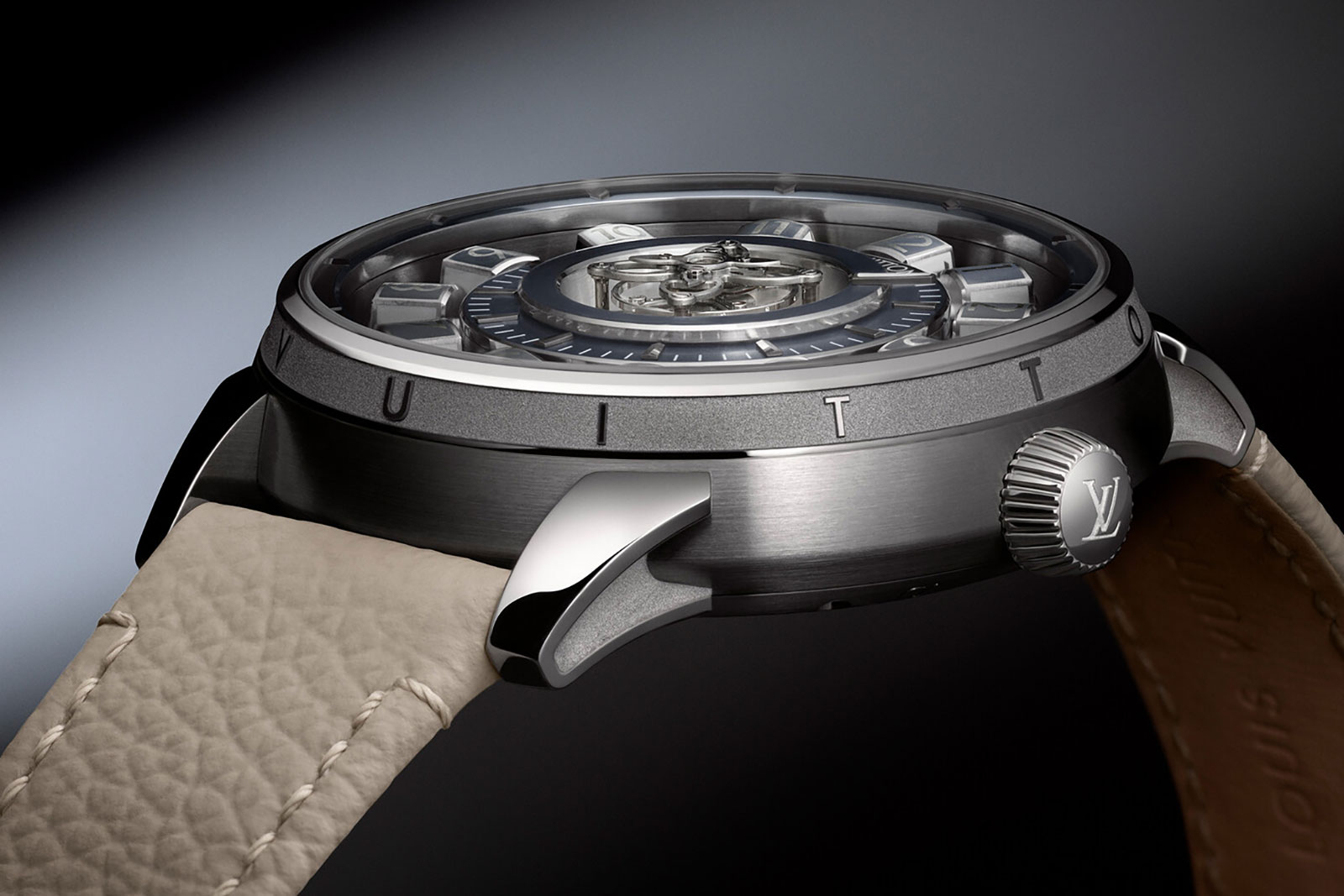
The central tourbillon sits slightly raised above the dial
Key facts and price
Louis Vuitton Tambour Taiko Spin Time
Ref. W9WG62
Ref. W9WG52 (diamond set)
Diameter: 39.5 mm
Height: 12.15 mm
Material: 18k white gold
Crystal: Sapphire
Water resistance: 100 m
Movement: Cal. LFT ST13.01
Functions: Hours with spin time display and minutes
Winding: Automatic
Frequency: 28,800 beats per hour (4 Hz)
Power reserve: 45 hours
Strap: Dolphin grey rubber strap
Limited edition: No
Availability: Now at Louis Vuitton boutiques
Price: €67,000 for the regular model; €133,000 for the diamond-set edition (prices exclude taxes)
Louis Vuitton Tambour Taiko Spin Time Air
Ref. W9WG41
Ref. W9WG31 (diamond set)
Diameter: 42.5 mm
Height: 12.45 mm
Material: 18k white gold
Crystal: Sapphire
Water resistance: 50 m
Movement: Cal. LFT ST13.01
Functions: Hours with spin time air display and minutes
Winding: Automatic
Frequency: 28,800 beats per hour (4 Hz)
Power reserve: 45 hours
Strap: Beige calf leather strap
Limited edition: No
Availability: Now at Louis Vuitton boutiques
Price: €75,000 for the regular model; €133,000 for the diamond-set edition (prices exclude taxes)
Louis Vuitton Tambour Taiko Spin Time Antipode
Ref. W9WG21
Diameter: 42.5 mm
Height: 12.45 mm
Material: 18k white gold
Crystal: Sapphire
Water resistance: 50 m
Movement: Cal. LFT ST12.01
Functions: Worldtime with spin time air day and night display and minutes
Winding: Automatic
Frequency: 28,800 beats per hour (4 Hz)
Power reserve: 45 hours
Strap: Beige calf leather strap
Limited edition: No
Availability: Now at Louis Vuitton boutiques
Price: €92,000 excluding taxes
Louis Vuitton Tambour Taiko Spin Time Flying Tourbillon
Ref. W9WG11
Diameter: 42.5 mm
Height: 12.45 mm
Material: 18k white gold
Crystal: Sapphire
Water resistance: 50 m
Movement: Cal. LFT ST05.01
Functions: Central flying tourbillon, hours with spin time air display and minutes
Winding: Automatic
Frequency: 28,800 beats per hour (4 Hz)
Power reserve: 45 hours
Strap: Beige calf leather strap
Limited edition: No
Availability: Now at Louis Vuitton boutiques
Price: €158,000 excluding taxes
For more information, visit LouisVuitton.com.
Back to top.
